The volcanic landscape of Teide National Park Tenerife seems to tick off all the superlatives. Rising from the caldera is the cone of Mount Teide. It is highest mountain in Spain, often capped with ice and snow.
This arid environment offers an austere beauty that grows on you. The eye tunes in to subtle colours and earthy tones that glow red and orange at sunset.
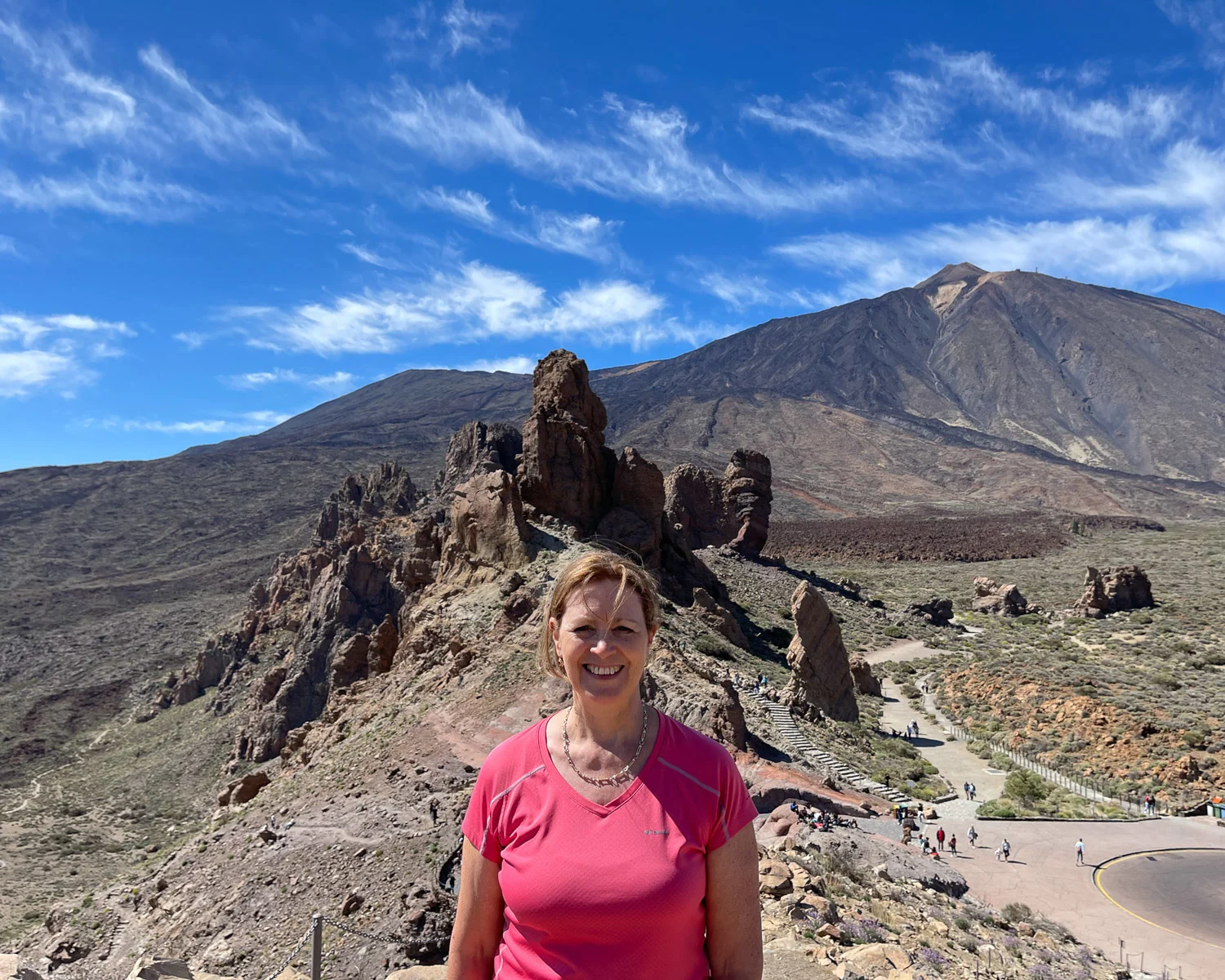
A cable car ride to the top of the volcanic peak, offers a surreal view over the blanket of cloud below. Read on for our comprehensive guide to visiting Teide National Park, one of the unmissable things to do in Tenerife.
This article may contain affiliate links that provide commission on purchases you make at no extra cost to you. As an Amazon Associate I earn from qualifying purchases.
The landscapes of Teide National Park
Located in the centre of the island of Tenerife, Teide National Park forms a high plateau at around 2000 metres above sea level. Encompassing an area of 190 km2, the boundary of the national park follows the line of a huge caldera. Known as the Circo de las Cañadas, it is the result of past volcanic activity.
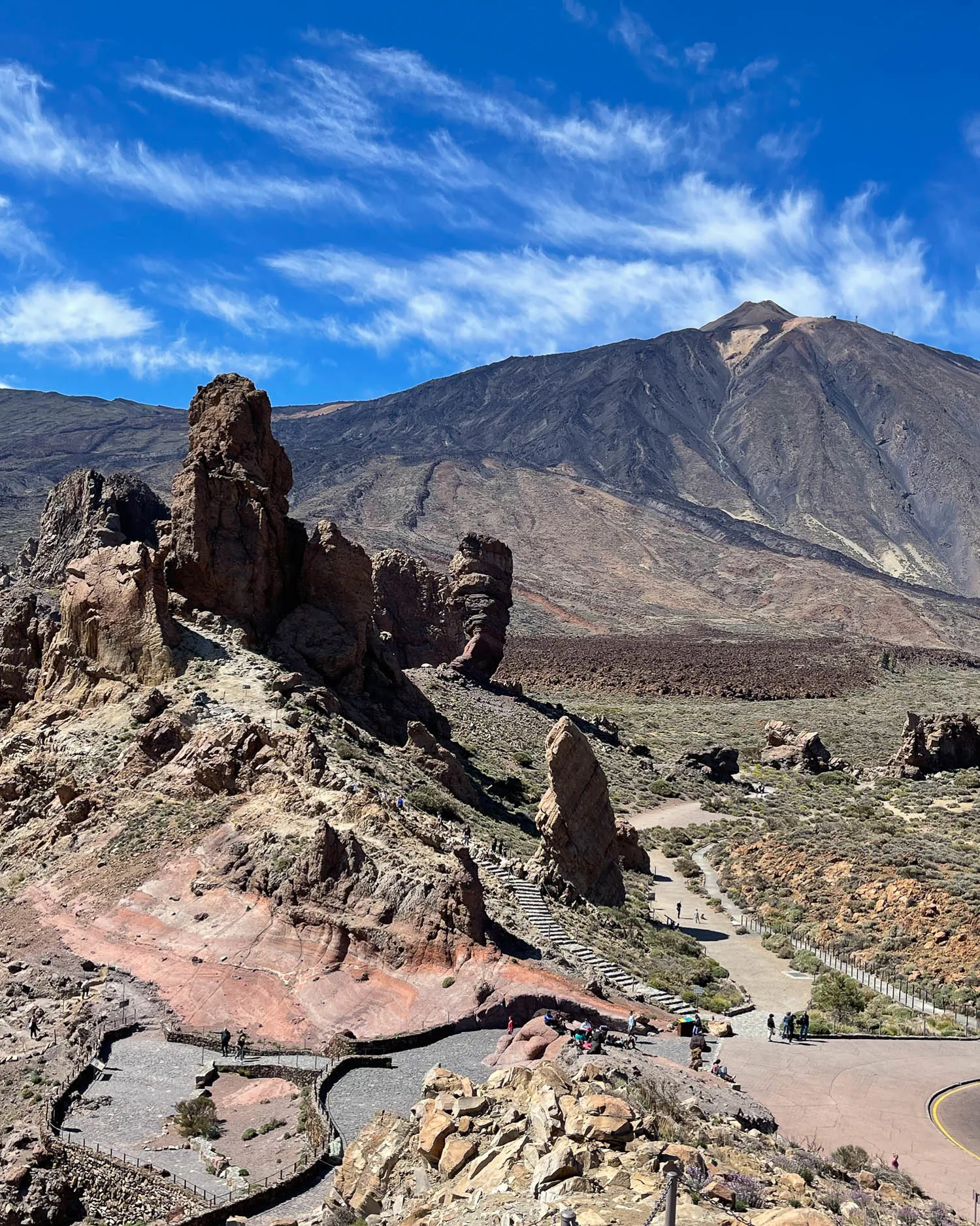
While high rock walls surround the caldera, the natural amphitheatre they encircle is relatively flat. It is covered by petrified lava flows, eroded rock formations and volcanic ash.
From this sea of lava rises the cone of Mount Teide, the highest mountain in Spain at over 3700 metres. The road meanders through the park, with several parking places to stop and view Mount Teide. Hiking trails branch out across the lava fields.
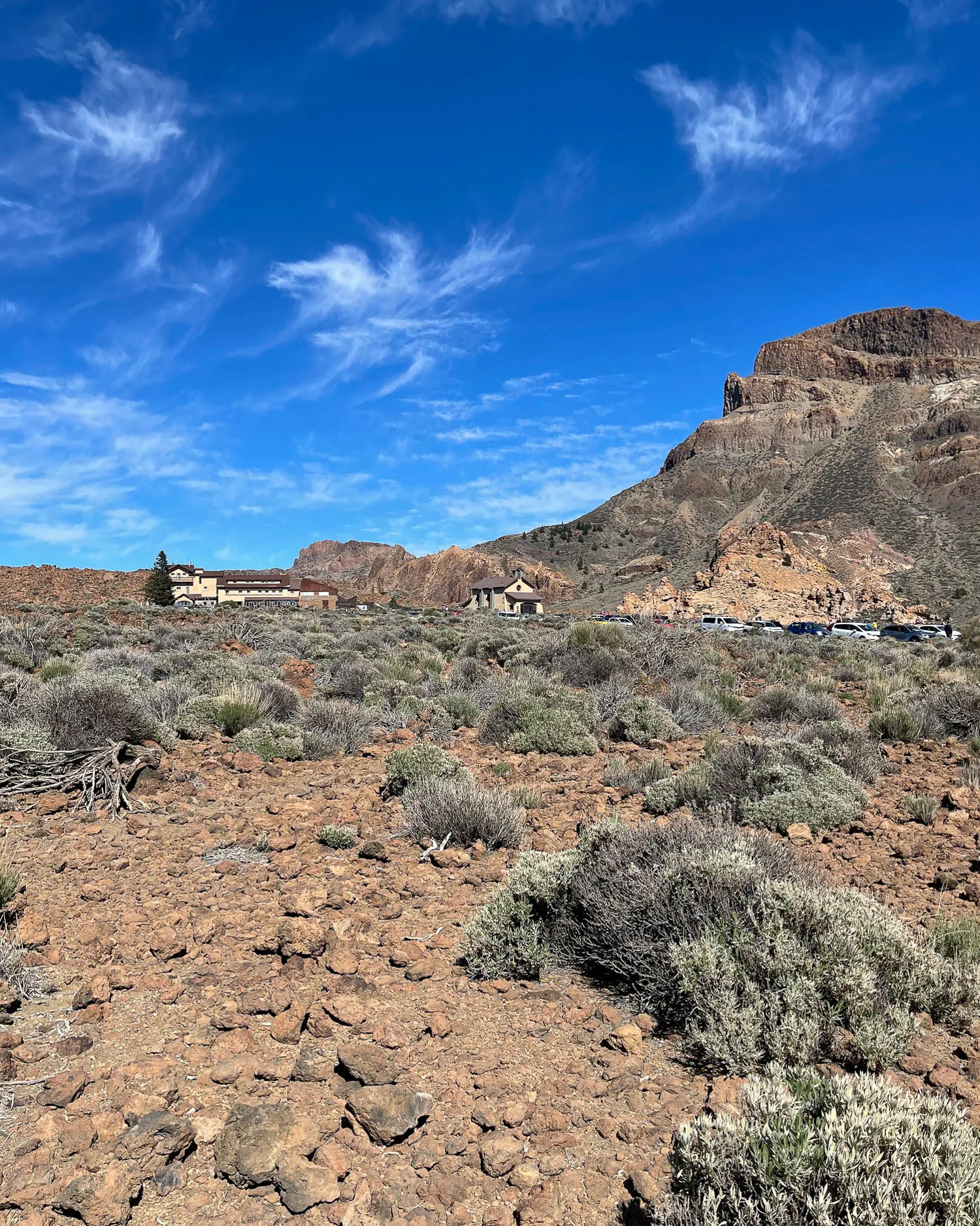
For much of the year, Mount Teide sports a cap of snow and ice. Around it the landscape glows in shades of red, orange and black. There’s a sparse sprinkling of low shrubs that manage to survive in this arid world.
Driving up from the coast on hairpin bends is an adventure in itself, as you observe the changing vegetation that grows at each altitude. Neatly tended fields give way to pine forests and then low scrub on the higher slopes.
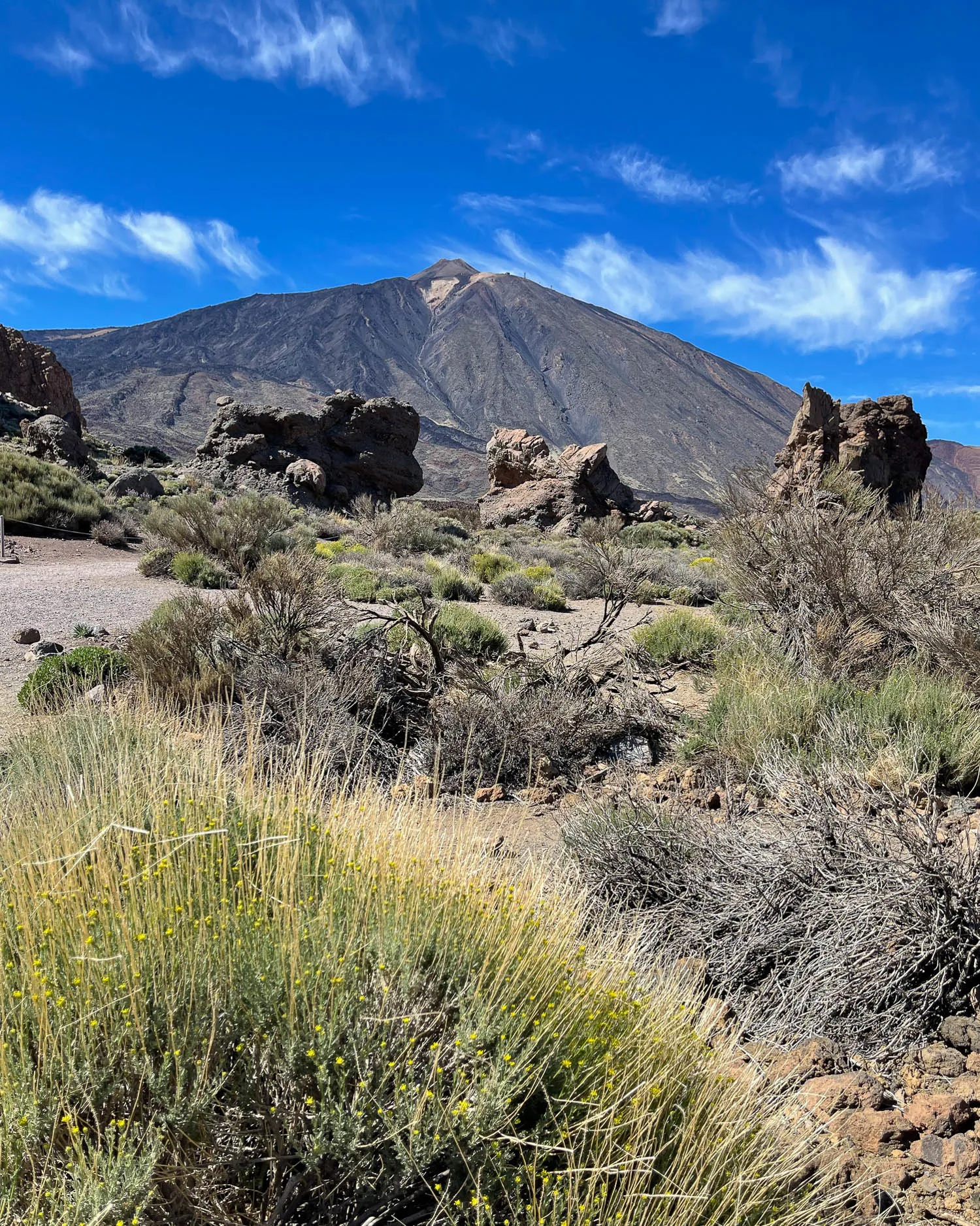
The landscape once you arrive in Teide National Park is austere and other-worldly. But observe a little closer and you’ll spot clumps of yellow broom and other small plants clinging to the rock crevices. It was this surprising survival of flora and fauna that allowed the Guanches, earliest inhabitants of Tenerife, to bring their herds of sheep and goats up here for summer pasture.
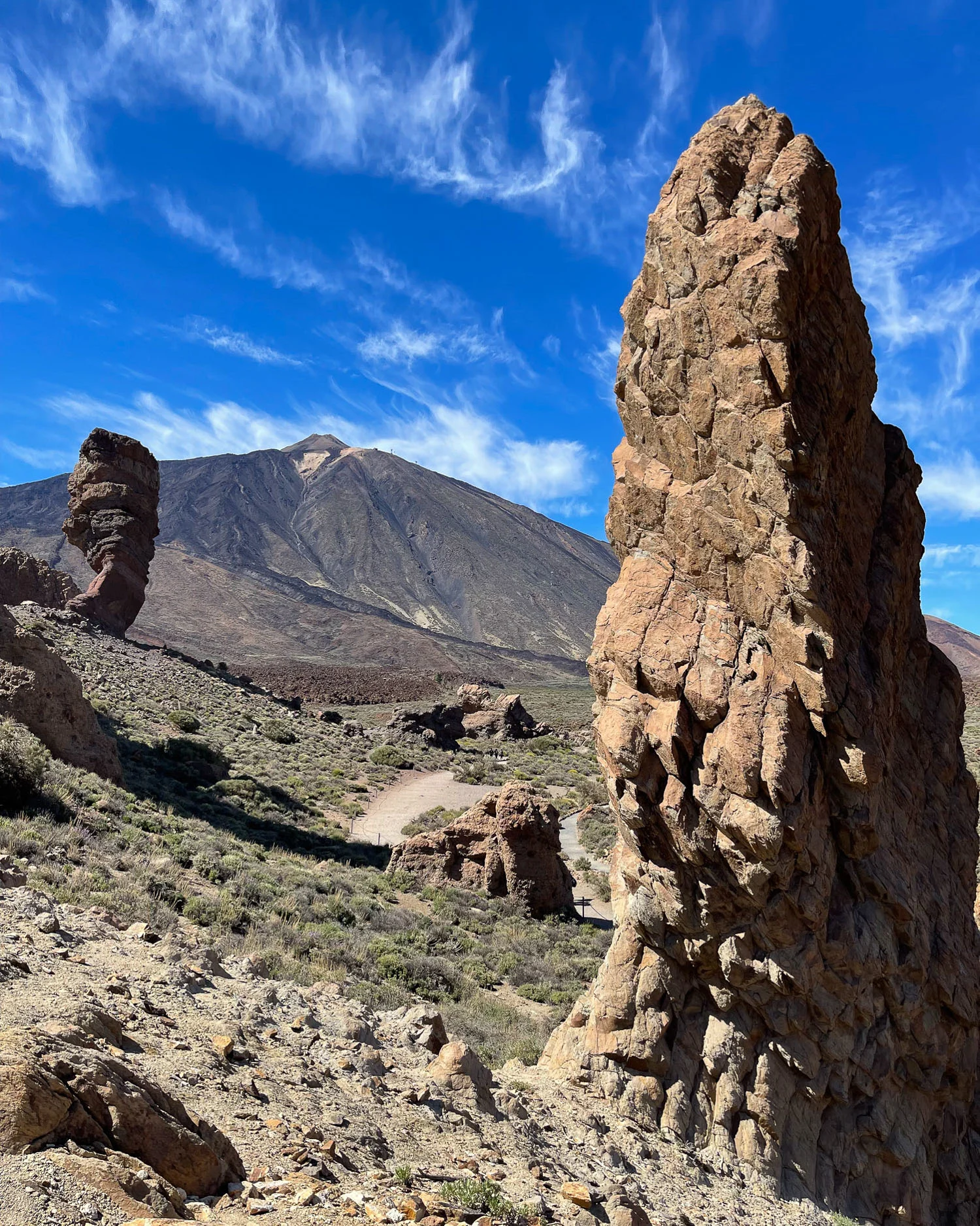
Plan your trip to Mount Teide National Park Tenerife
Teide is the most visited national park in Spain, and one of the top things to do in Tenerife, so you won’t want to miss it! To plan your visit first consider:
- How long do you have to spend? Minimum is half a day but ideal is a full day.
- How will you get there? Main options are hire car, public bus, or take a tour with transport provided.
- What do you want to see and do while in the park? This will help determine the best type of transport for you.
- Do you want to take the cable car? If so you need to pre-book a timed ticket, ideally at least a few days ahead.
- Do you want to climb the trail from the top cable car station to the summit of Mount Teide? This requires a special permit, and numbers are limited so book 2-3 months ahead.
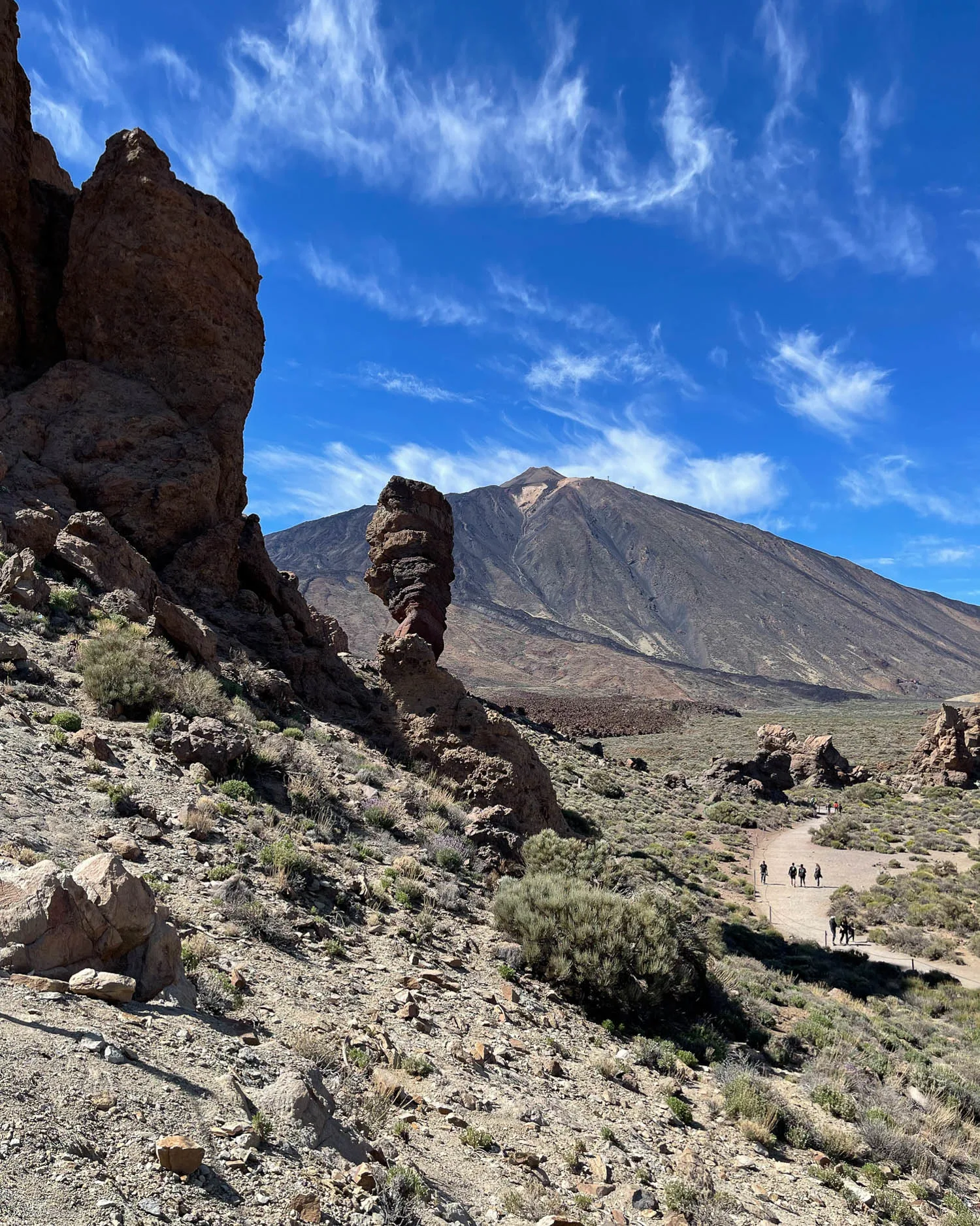

Need help to design your dream holiday? We’ve partnered with UK travel advisor Luxeco Holidays to create your personalised itinerary
Points of interest within Teide National Park
Within Teide National Park, these are the main points of interest;
Cable car
This is the most popular draw within the park and it will take you up to the high slopes of Mount Teide. From the cable car or Teleferico top station, you can follow two different walking trails.
And, if you have a special permit, you can walk to the summit itself. This tour includes the cable car ticket and this guided hiking tour includes the cable car and pass to take the trail to the summit.
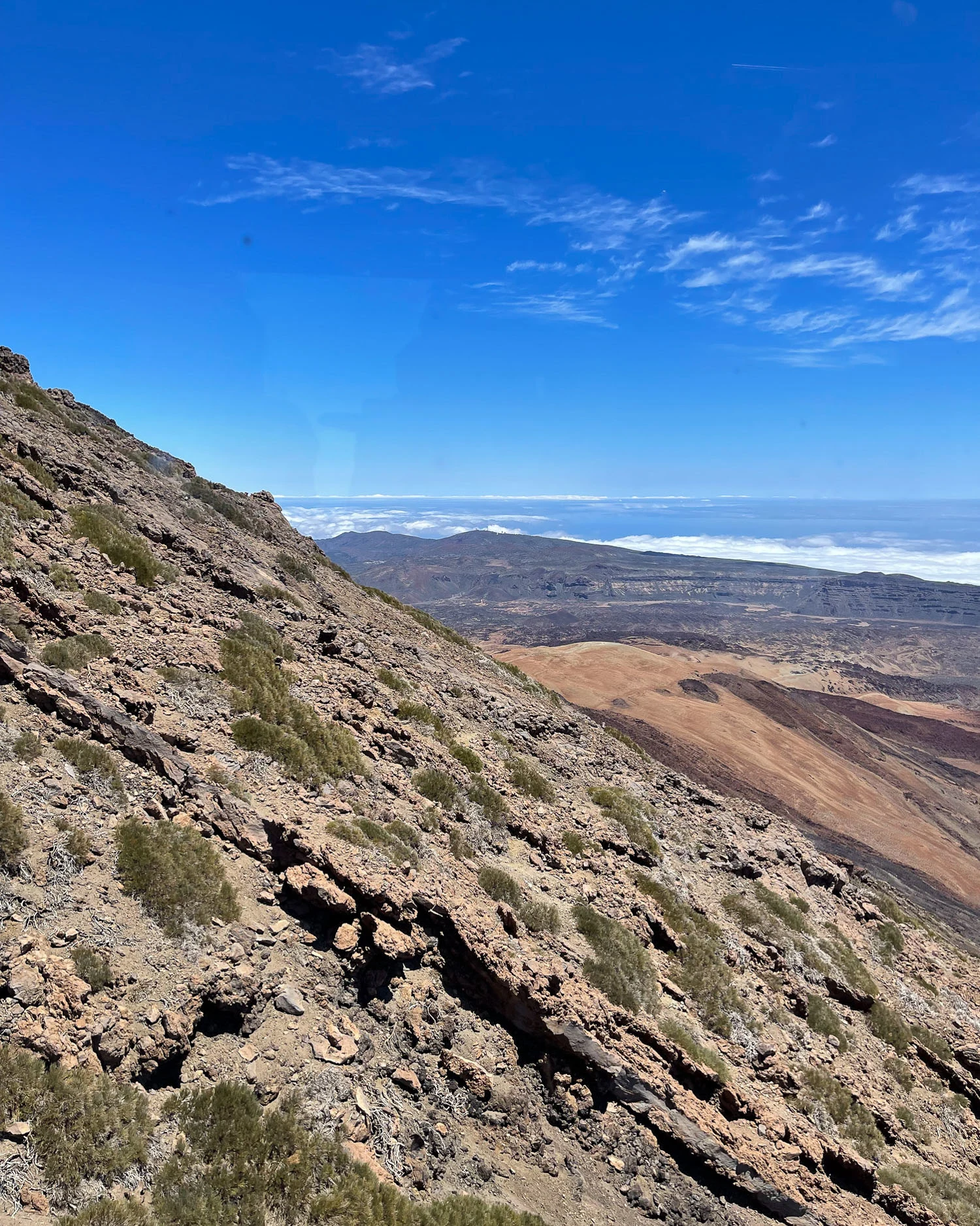
Roques de Garcia
An extremely popular spot with a cluster of striking rock formations and a circular walking trail that allows you to view them. There’s parking on the side road leading to it. If you do not have cable car tickets, this is where you should head first. It’s also a short walk from the Parador.
Want more of Tenerife? Explore 20 of! the best things to do in Santa Cruz de Tenerife
The Parador des las Cañadas del Teide
This is the only hotel within the National Park, and you could book to stay the night here if you’d like to see a bit more of Teide. For most day visitors, it’s a place to stop at the adjoining cafeteria. It serves simple lunch dishes and refreshments, and has an outside terrace with views of Mount Teide.
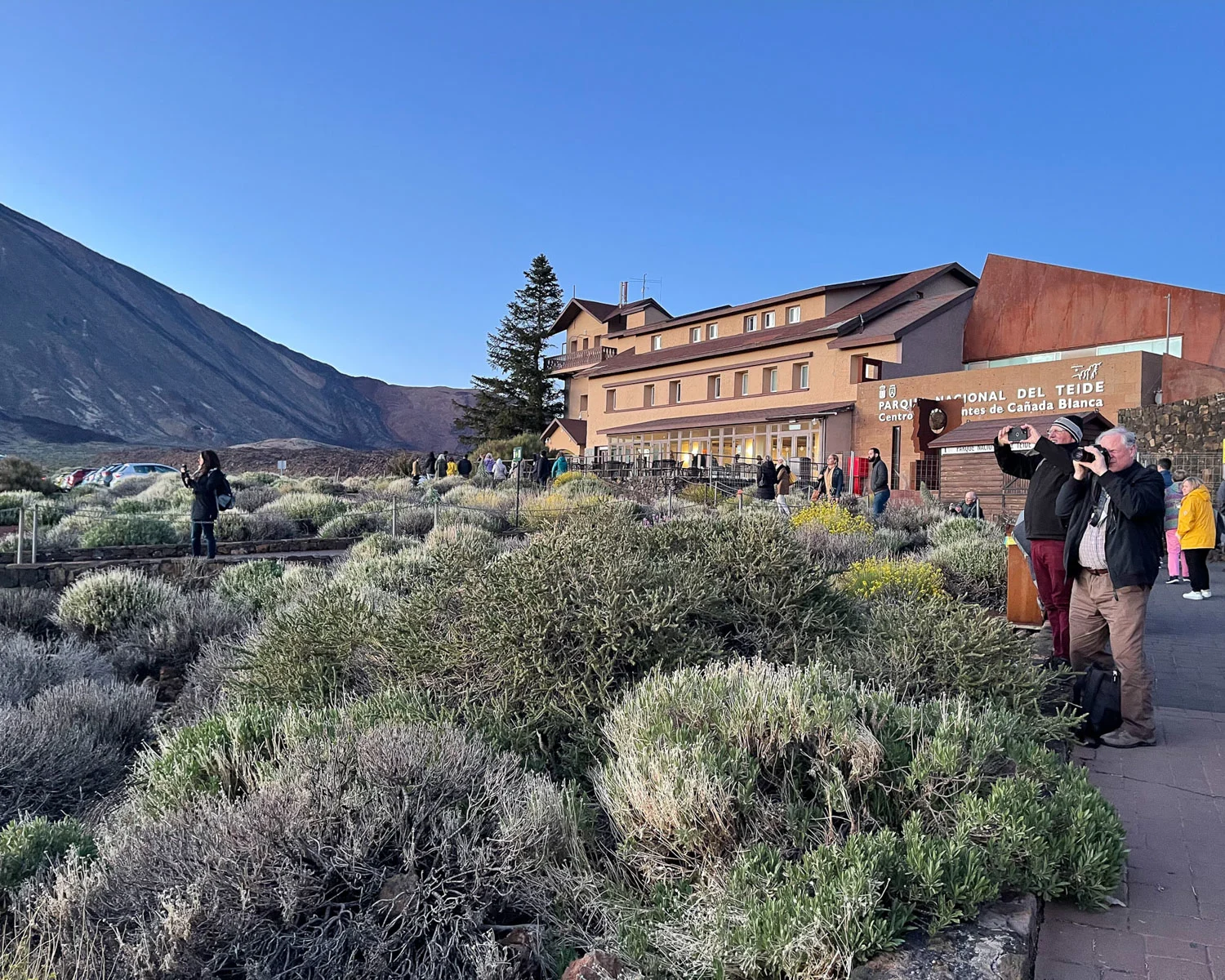
Visitor centres
There are two visitor centres within the park. You will pass Visitor Centre El Portillo if arriving from the north of Tenerife. Visitor Centre Cañada Blanca is by the Parador.
A small information kiosk and exhibition is located at the Museo Etnografico Juan Evora, which shows how pastoralists lived in the past. It’s a good idea to stop at one of the visitor centres to pick up a map of Teide National Park. All the walking trails are marked on it.
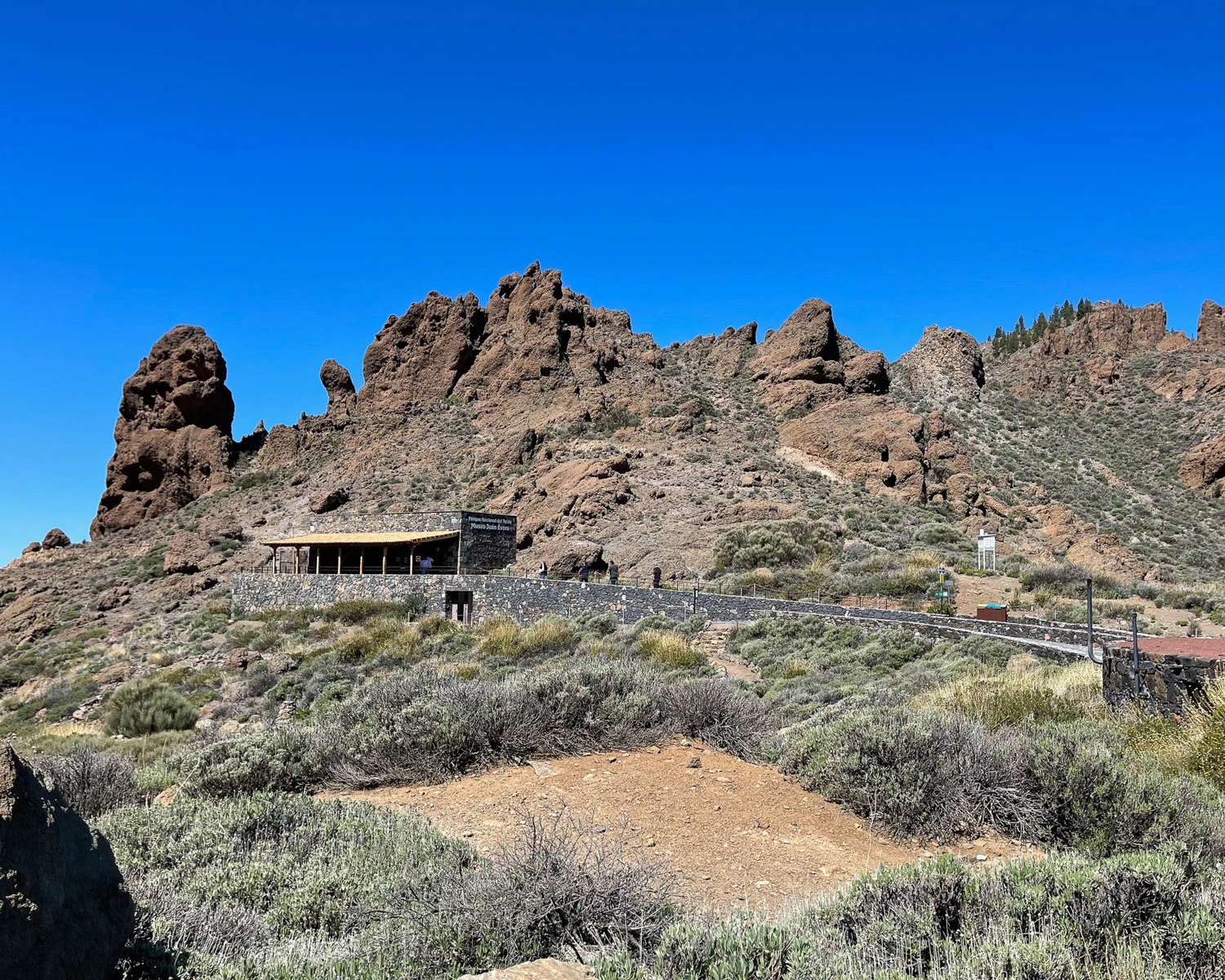
Viewing Points
Along the roads through and into the park, there are numerous viewing points, where you can park the car and get a view of Mount Teide. Marked trails lead off from many of these. There are information boards to tell you about the different geological formations, flora and fauna.
Teide Observatory
On the northern edge of the park at Izana, the observatory has several buildings with telescopes to observe the solar system. The inside of the observatory buildings and telescopes can only be visited on a tour, which can be pre booked here.
Read about Timanfaya National Park and the volcanoes in Lanzarote
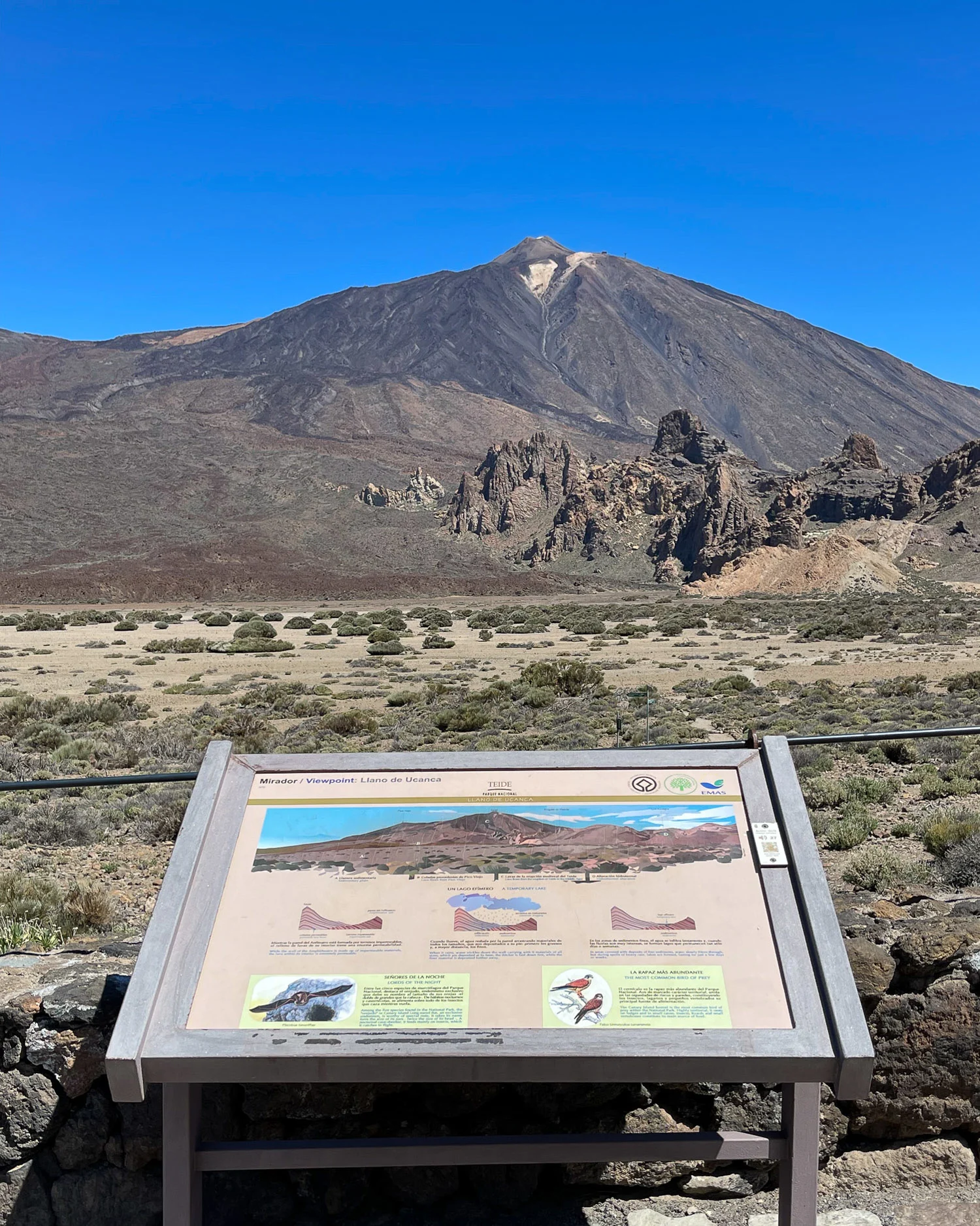
Map of Teide National Park Tenerife
I could not find any decent map online of Teide National Park. However, you can pick up a free leaflet with an excellent map at the information centres within the park.
To help you plan your visit, I have photographed the map from this leaflet, which shows all the walking trails below. There are also numerous information boards showing a map with walking trails and points of interest, located at each viewing point.
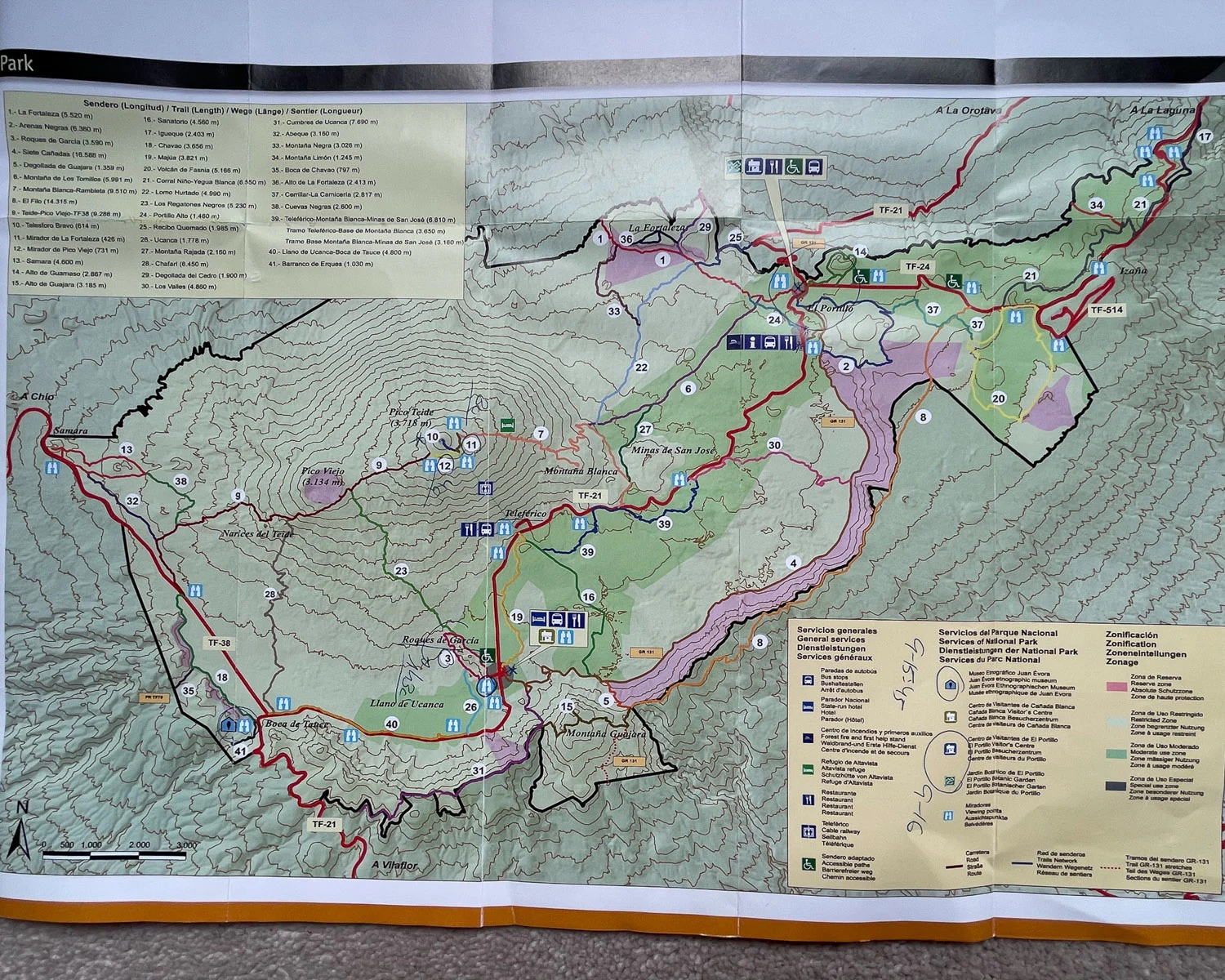
Different ways to experience Mount Teide National Park
Once you’ve arrived in the Mount Teide National Park, ideally for a few hours or a whole day, how should you spend your time there? Here are some different options, depending on your mode of transport and whether you are visiting as part of a tour.
- Driving tour – Drive through the park from one side to the other, admiring the landscape. You might stop in a couple of places, such as the Parador / Roques de Garcia for photos. This is what you’ll get on many day tours like this one that include Teide as well as other locations in Tenerife. (Time 1-2 hrs)
- Driving tour + short walks – Drive through the park with multiple stops at different parking areas. Then, read the information boards and have a walk on some of the marked trails that lead from them. (Time 3-4 hrs)
- Driving tour + cable car – Drive around the park, stopping at a few different areas. Then take the cable car to the top of Mount Teide for a walk on the trails at the top station. This is the option that I tried on my day trip. If you have a special permit, you can also walk the trail that leads from the top cable car station to the summit of the volcano crater. This tour includes the cable car pass.(Time – a full day)
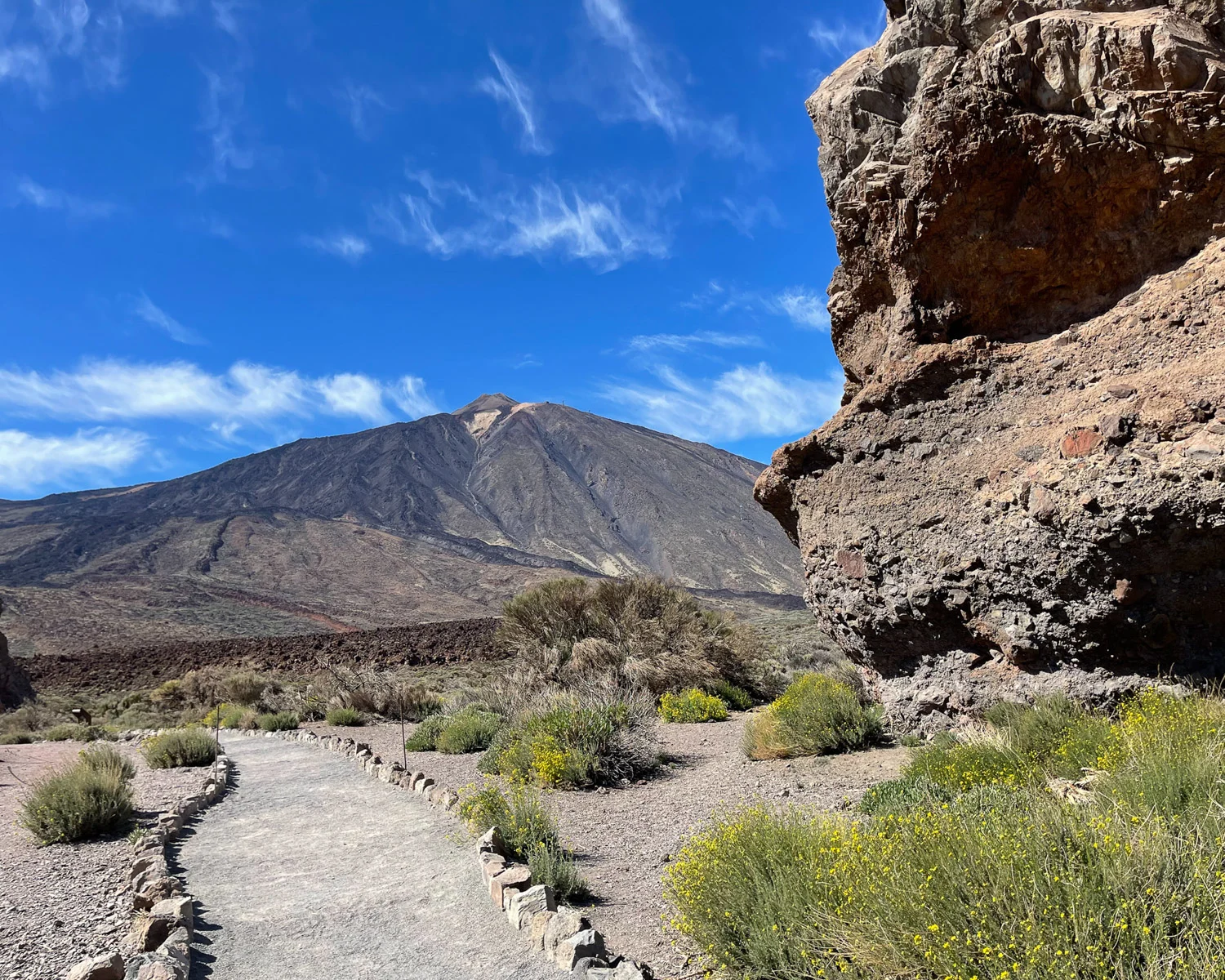
Walking and cycling tours
- Walking trails – Drive to the park or take the bus, then spend a day hiking on the many trails around the park. One of the hikes could be to walk up Mount Teide itself on the Montana Blanca trail. This walking tour includes a guided hike, the cable car and the pass to walk up Mount Teide crater. (Time – a full day).
- Cycling tour – Keen cyclists can cycle up into the national park, then cycle around the national park, stopping at different parking areas for photos or rest stops. There is nowhere to hire bikes within the park, so this option involves cycling up serious inclines just to reach the park. It is best left to the serious rather than occasional cyclist. (Time – a full day)
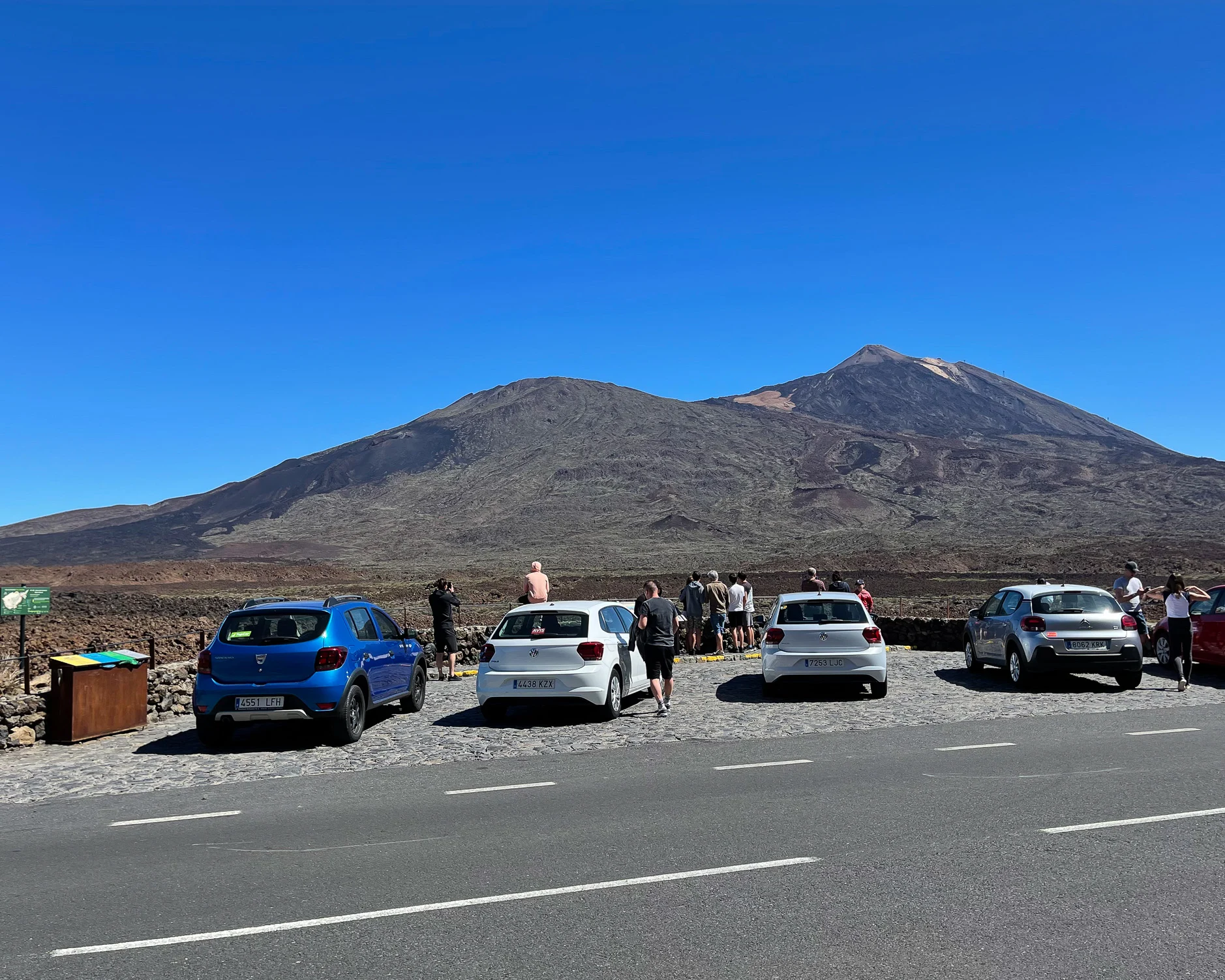
Teide excursion and tours
There are numerous Teide excursions and tours available within the national park. Here are a few that we recommend;
Mount Teide tour with cable car ticket – this full day tour includes pickup from your hotel in the north or south of Tenerife. You’ll pass through some pretty Tenerife mountain villages and through the park before arriving at the cable car at the base of Mount Teide. A return ticket is included to allow you to ascend the cable car and walk on some of the trails from the upper station.
Teide National Park full day scenic tour – this full day tour departs from the south of Tenerife. It includes a drive through Teide National Park and mountain village of Vilaflor. You’ll also see other places on the island such as Icod los Vinos where you stop for lunch.
See also Garachico and Masca, returning past the Los Gigantes cliffs. This tour does not include the Teide cable car, but is ideal for those with limited time. You’ll see different parts of Tenerife, including Teide National park.
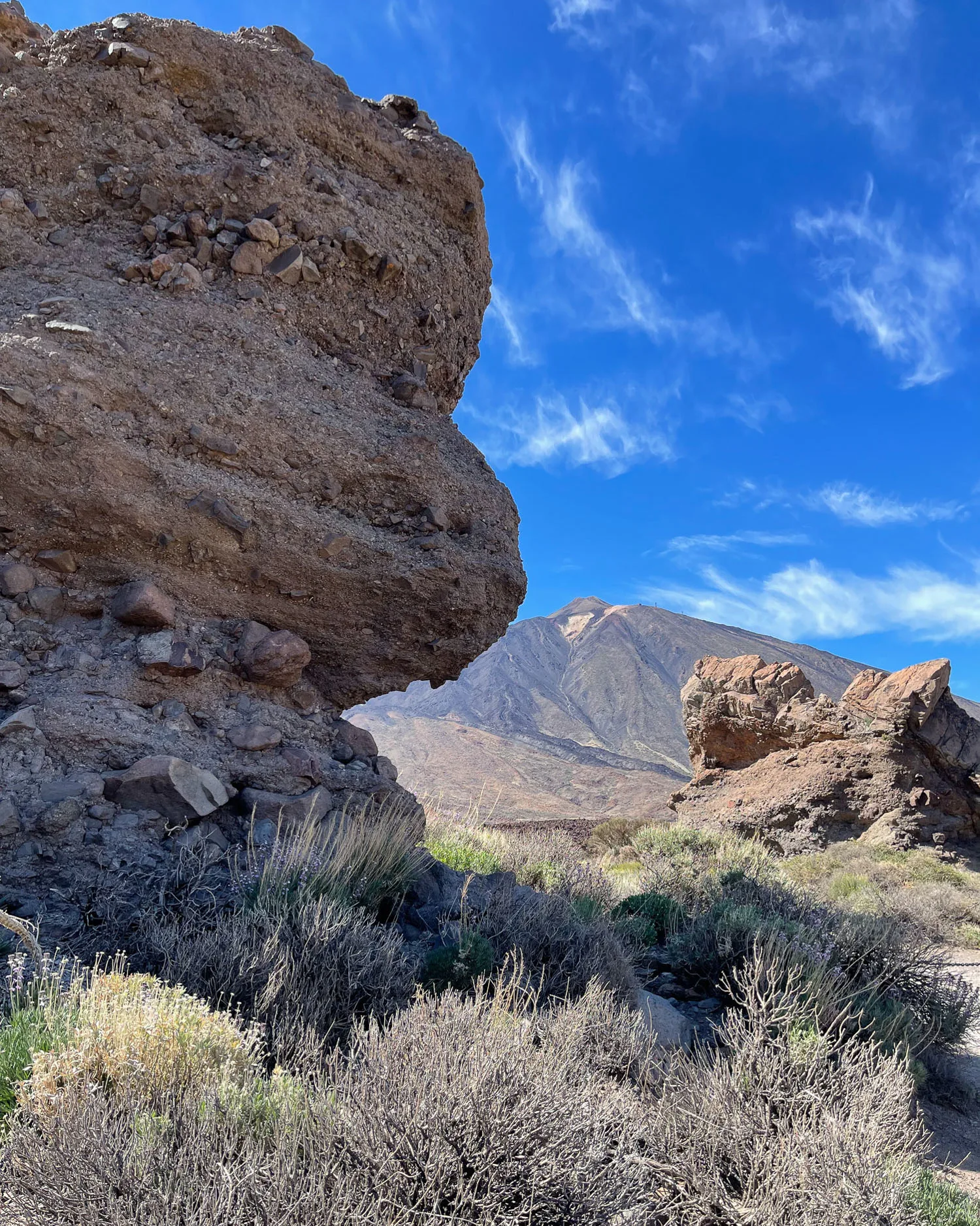
Mount Teide summit guided hiking tour – this full day tour is for those who want to hike through the Teide National Park. It includes a 3 hour guided hike on one of the trails, the cable car ticket and the special pass to hike the trail up to the summit of Mount Teide.
Teide National Park Stargazing experience – this evening tour allows you to experience Teide by night. The tour includes a meal at a traditional Canarian restaurant. You’ll also have a walk in Teide National Park to see the different planets and star formations and view the solar system through telescopes.
Teide National Park Tickets
It is free to visit the Teide National Park to walk, cycle or drive around and no tickets are required for this. There is no checkpoint to enter the park. You will only know you have reached the park because of the roadside signs for Teide National Park. Parking at the different viewpoints and parking areas within the park is also free.

However you may need to buy tickets for certain activities within the park
- Tickets for the cable car must be booked in advance. When you see websites talking about booking Mount Teide tickets, they generally mean tickets for the cable car.
- A permit for the trail to walk from the top cable car station (La Rambleta) to the crater and peak of Mount Teide (Pico del Teide) is free. Numbers are limited so you need to book this 2-3 months in advance.
- Other costs you may need to budget for include cost of public bus or hire car to get you to the park and the bus to get around the park. Plan for lunch at the cafes at the Parador or Cable Car if you did not bring a picnic and costs of any guided tours you choose to book.
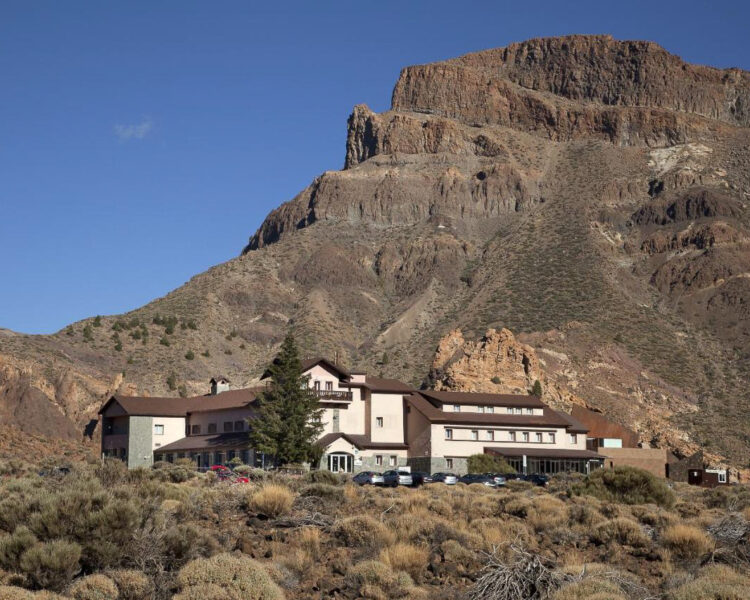
Stay at Parador de Las Cañadas del Teide in Tenerife – the only hotel within Teide National Park
Teide National Park Cable Car – getting tickets
Ascend the volcanic crater of Mount Teide to get some fantastic views. Take the Teide cable car to the upper station (la Rambleta) just below the summit.
Because this is one of the most popular things to do in Mount Teide National Park, you should book the cable car in advance. This will give you a guaranteed timed slot.
Sometimes due to bad weather, wind, rain or snow, the cable car is forced to close. When this is the case, you will be notified by text on the day and can get a refund on your ticket.
Discover 30 amazing things to do in Lanzarote
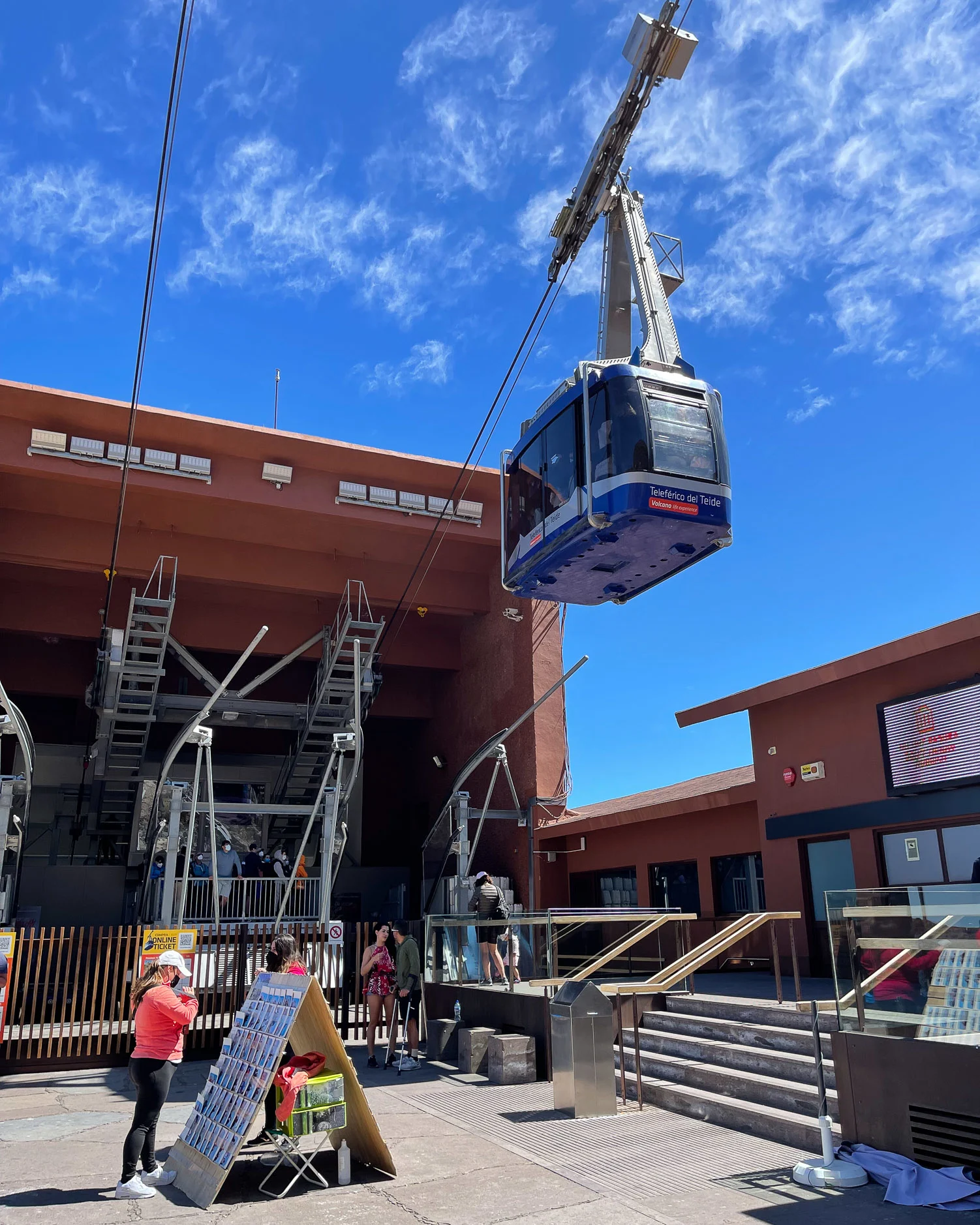
If you are not able to book a ticket in advance, you can try to arrive early in the day and hope that some are left. There are ticket machines at the cable star lower station. If you don’t have your own transport you can also book this tour that includes the cable car ticket.
Note: Phone signal is patchy or non existent within the park, although there is wifi at the cable car station. Ideally book the ticket online before you enter the park.

Need help to design your dream holiday? We’ve partnered with UK travel advisor Luxeco Holidays to create your personalised itinerary
About the Cable Car ride
On arriving at the lower cable car station, I joined a short queue 20 minutes before my assigned time. I had my pre-booked ticket on my mobile (having taken a screenshot in case my phone signal failed). The ticket was checked and the queue moved pretty steadily.
Within 10-15 minutes I was boarding the cable car and enjoying the fantastic views. It rose above the slope of Mount Teide, overlooking the whole park. The cable car cabin was quite crowded, but I was still able to take some nice photos looking out from one side.
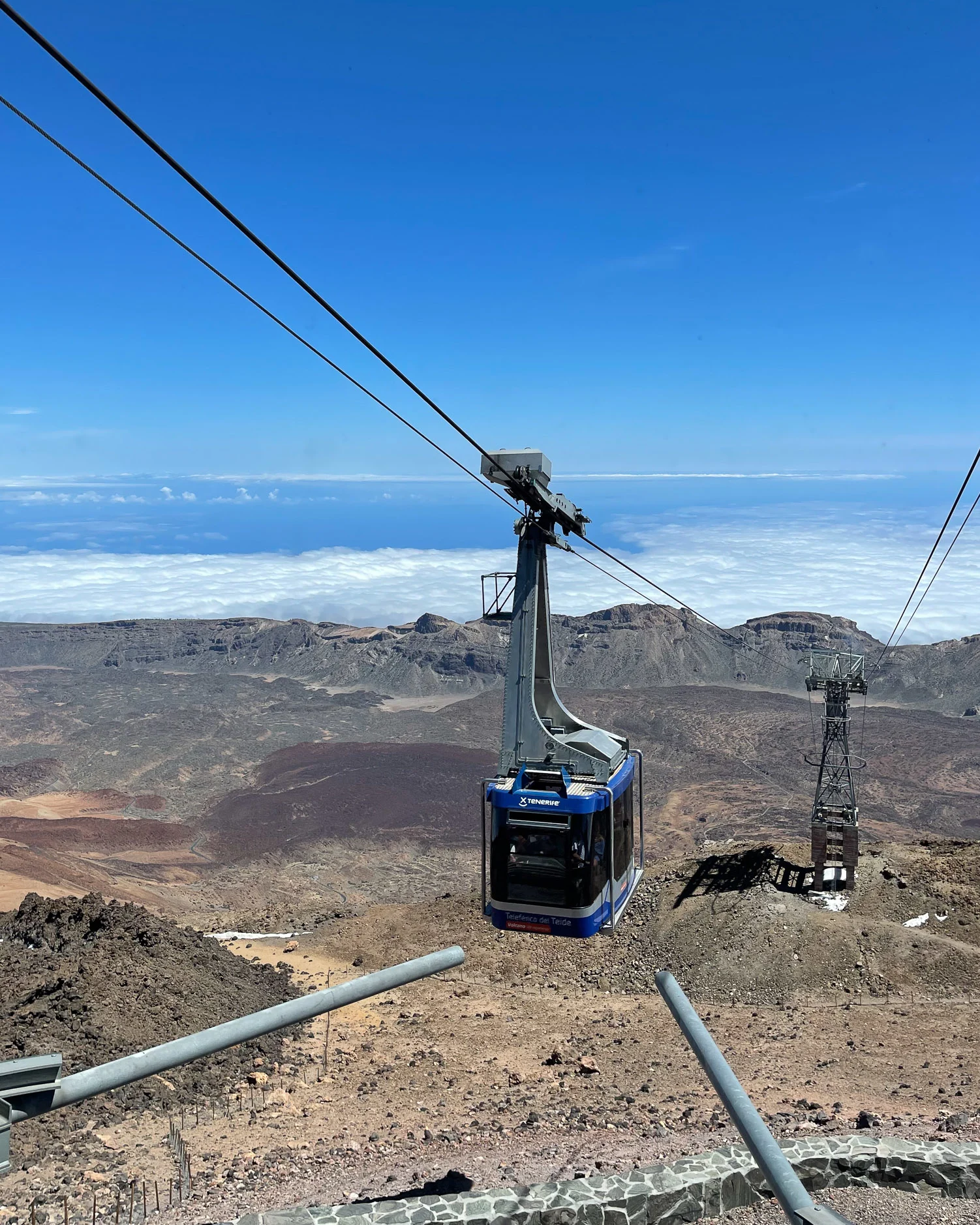
Useful cable car information
- The cable car starts from the base station at 2,356 metres above sea level and rises to 3,555 metres above sea level.
- You can’t take the cable car if you are pregnant and children must be aged 3 and above. No pushchairs are allowed in the cable car, so children must either be carried or walk.
- Those with mobility or serious health issues can’t take the cable car. This is because in an emergency or adverse weather conditions, the cable car would need to stop. Then, anyone at the top station would need to descend on one of the walking paths.
- Each of the two cabins (one going up, one going down) holds a maximum of 44 passengers. Usually, however, it’s limited to around 35 people.
- A cable car ride takes 8 minutes to travel from base station to top station, hence the cabins run around every 10 minutes.
- The cable car runs from 9am and last ascent ranges from 4pm (winter) to 5.30pm (summer) with last descent around 1 hour later.
- If you don’t have your own transport you can also book this tour that includes the cable car pass and pickup from your hotel.
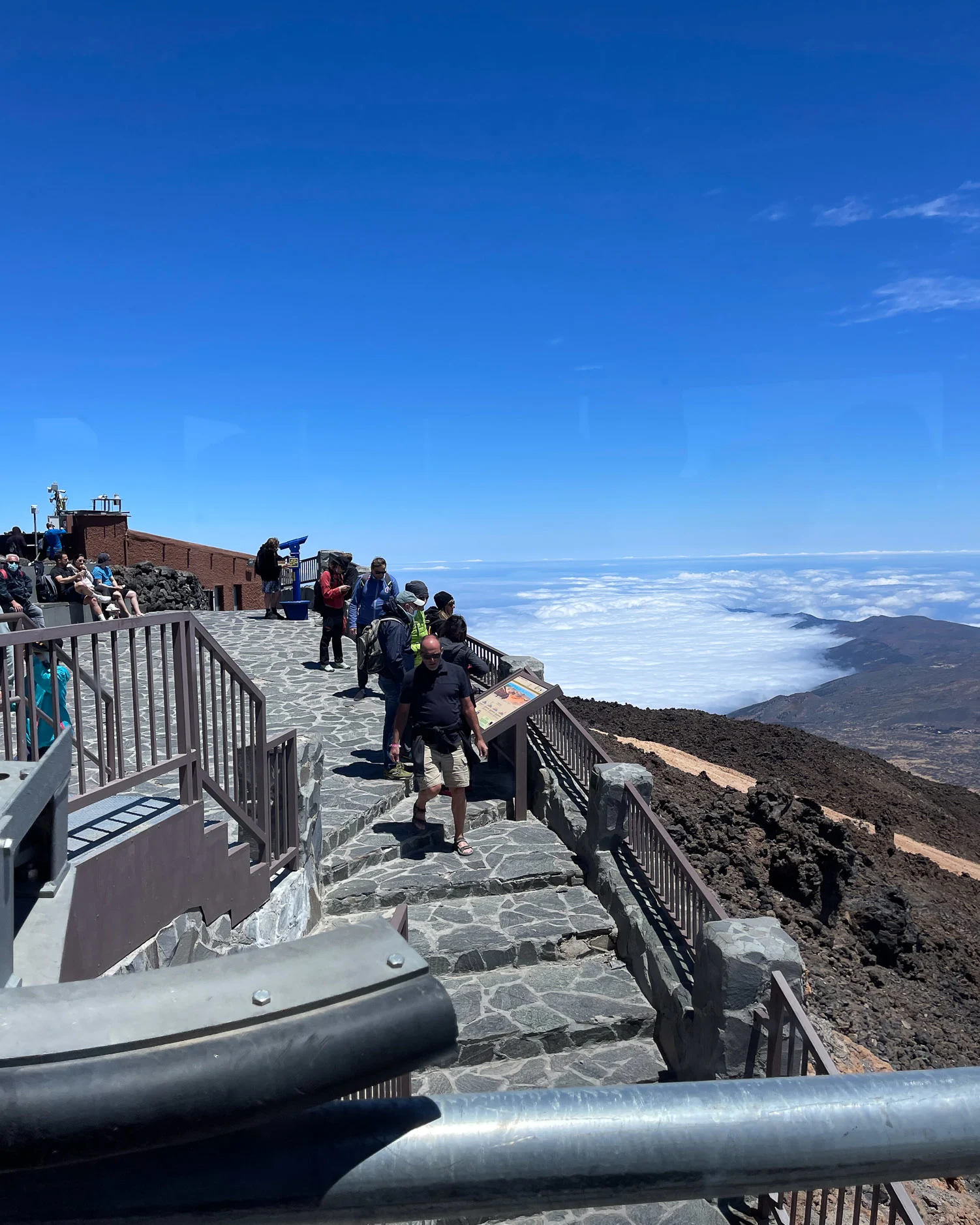
Walking routes from the cable car top station
Once you arrive at the cable car top station (La Rambleta), there are a couple of different trails that lead in opposite directions. Officially you are allowed 1 hour at the top station. Each walk takes around 45 minutes at a leisurely pace to get to the viewpoint and return.
This means that unless you are a fast walker, you will probably need to choose just one of the walks. I decided to walk very fast and managed to see both trails. If you have to choose, my favourite was the Pico Viejo trail, which is slightly longer.
The 1 hour limit is to ensure that it does not get too crowded on the trails and that everyone can get down via the cable car at the end of the day. However, I don’t believe the time limit is rigidly enforced. There didn’t seem to be any way to check how long people had been at the top.
La Fortaleza Vantage Point – Route 11
Heading northwards from the top cable car station, the La Fortaleza path meanders through a landscape of volcanic sand and jagged rocks. These were thrown here during the mountain’s eruption. As the path nears the Mirador (viewpoint) it meets the trail that descends past the Refugio de Altavista to Montana Blanca.
You can book a place to stay at the refuge (currently closed due to Covid), in order to ascend Mount Teide at daybreak without a permit. However, you must come down from the crater by 9am.

From the viewpoint a spectacular view of the north side of Tenerife opens up. Look out towards Valle de La Orotava and the rugged Anaga Massif.
Below you is a sea of clouds, sitting at an altitude of between 1500 metres and 1800 metres. They are formed when the moisture laden trade winds hit the mountainous north face of the island, creating a cloak around Mount Teide.
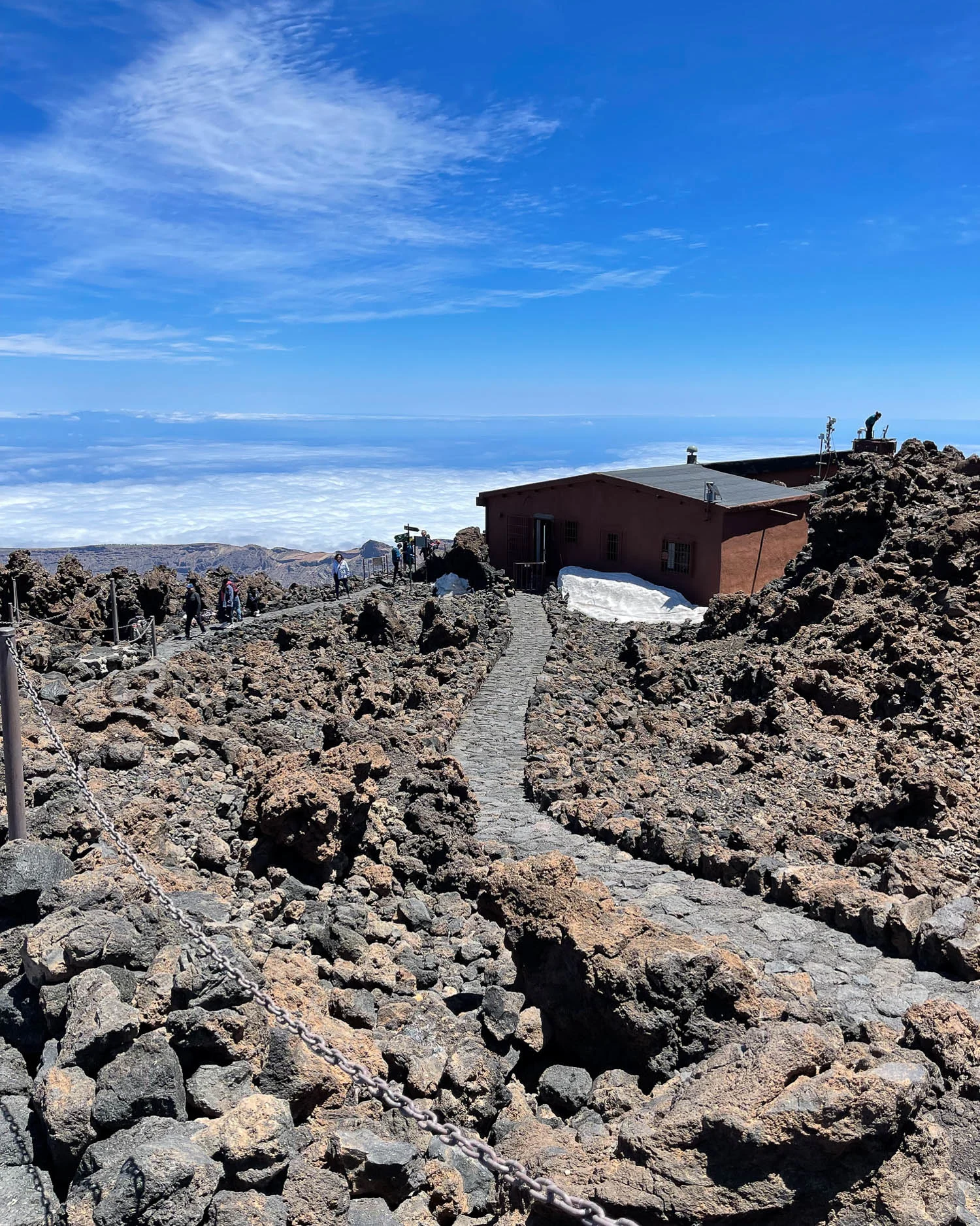
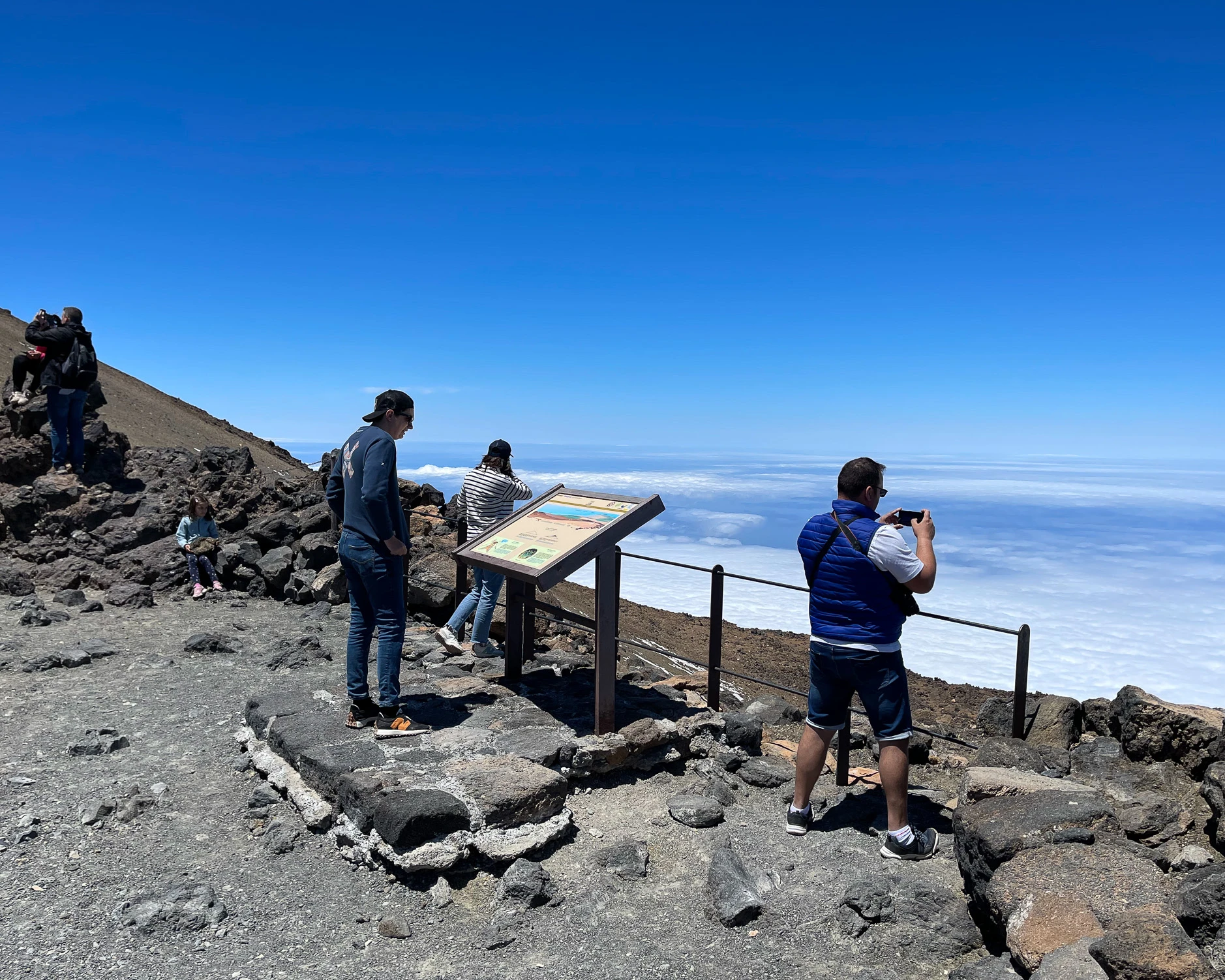
Pico Viejo Vantage Point – Route 12
The Pico Viejo path takes you from the Cable car top station, towards a viewpoint that looks to the south of Tenerife. It’s a cobbled stone path, bordered by rugged lava rocks, with steep steps in places.
From the Pico Viejo viewpoint which takes around 15-20 minutes to reach, you can look over the whole caldera of Las Cañadas del Teide. View the sheer walls of rock that enclose the plateau of the park.
Below the viewpoint is the multi-coloured crater of Pico Viejo, which gives the path its name. It’s a smaller version of the Mount Teide crater behind you. From here, a walking trail leads down, taking you towards the rocky outcrops of Roques de García and Montagna Guajara.
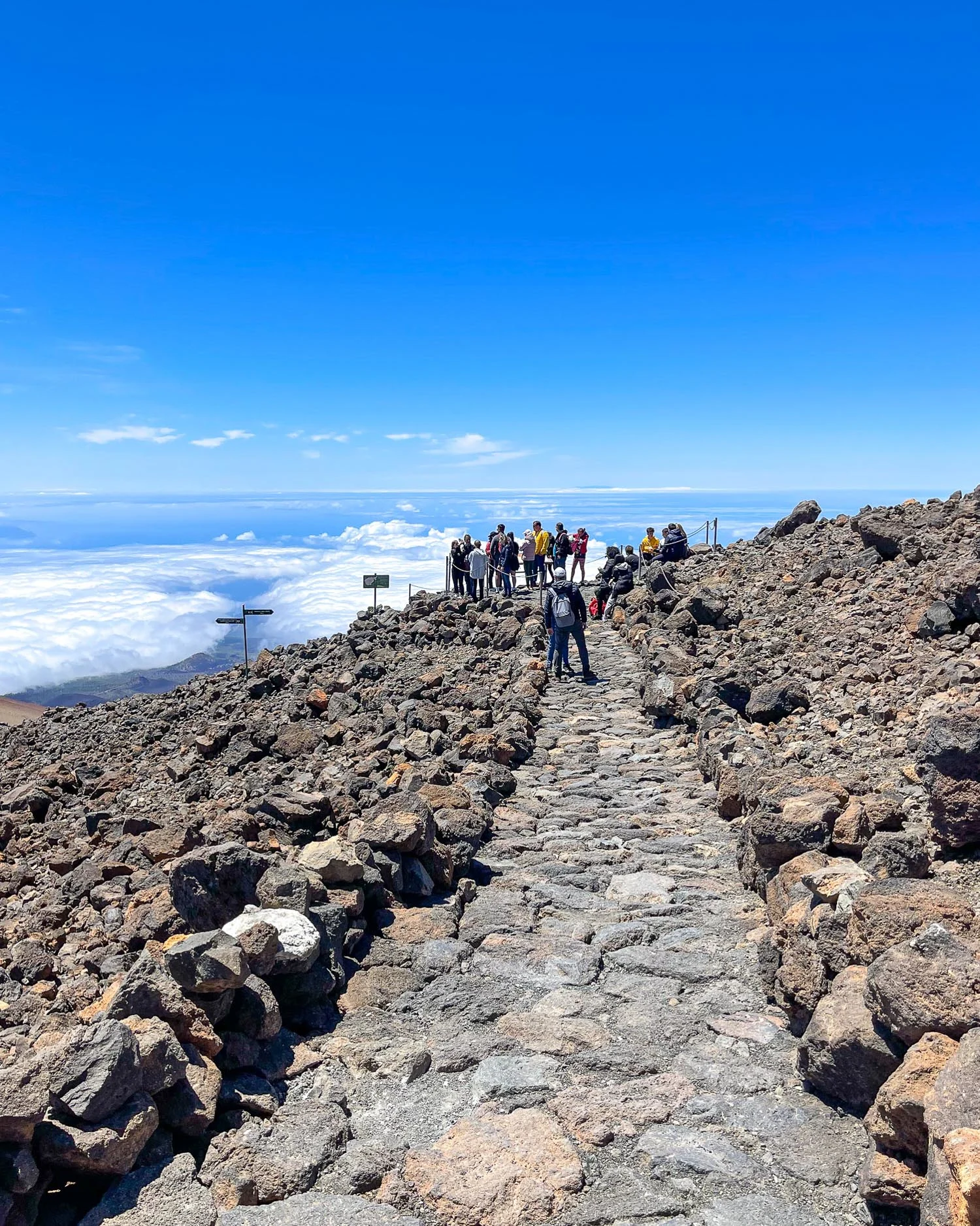
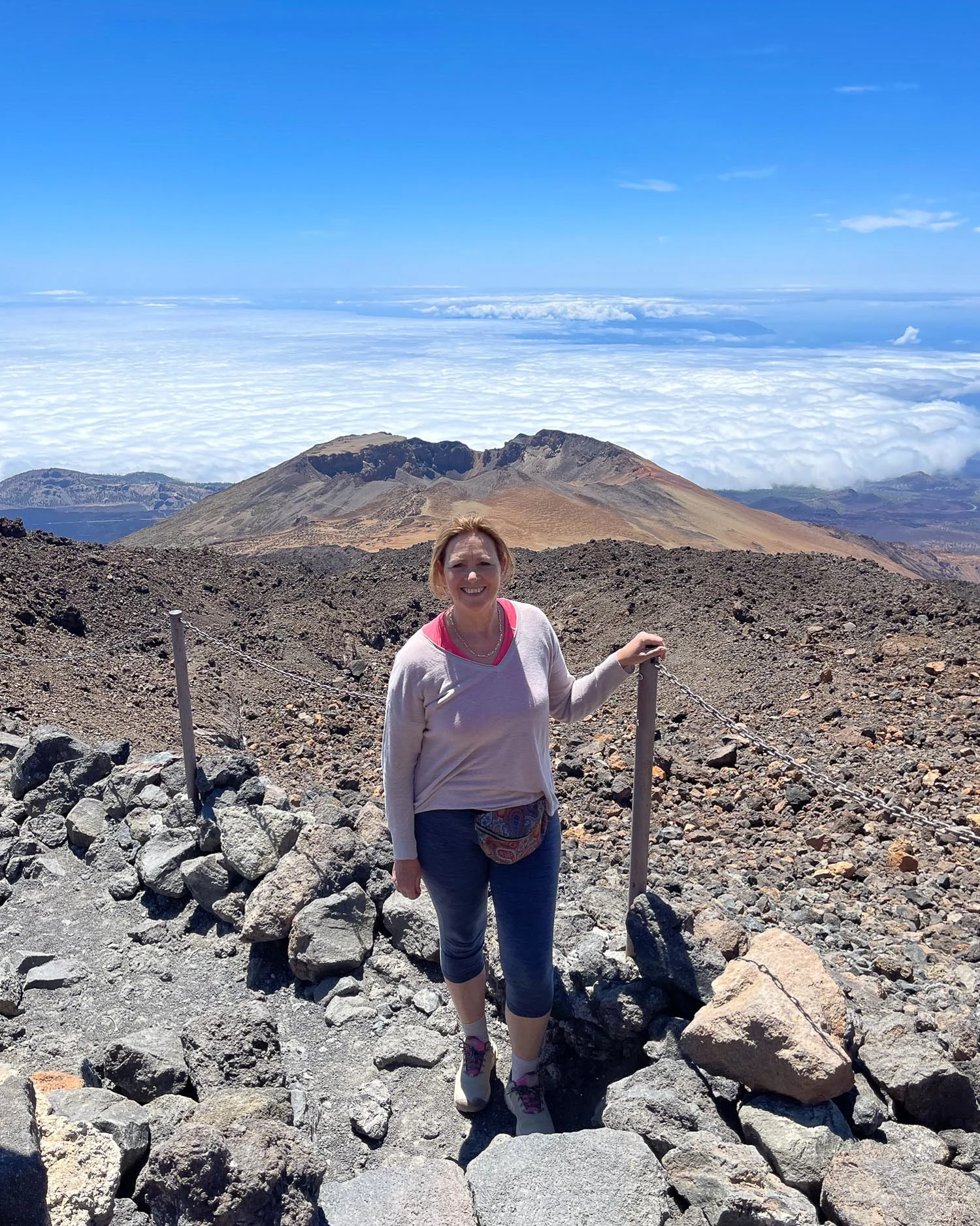
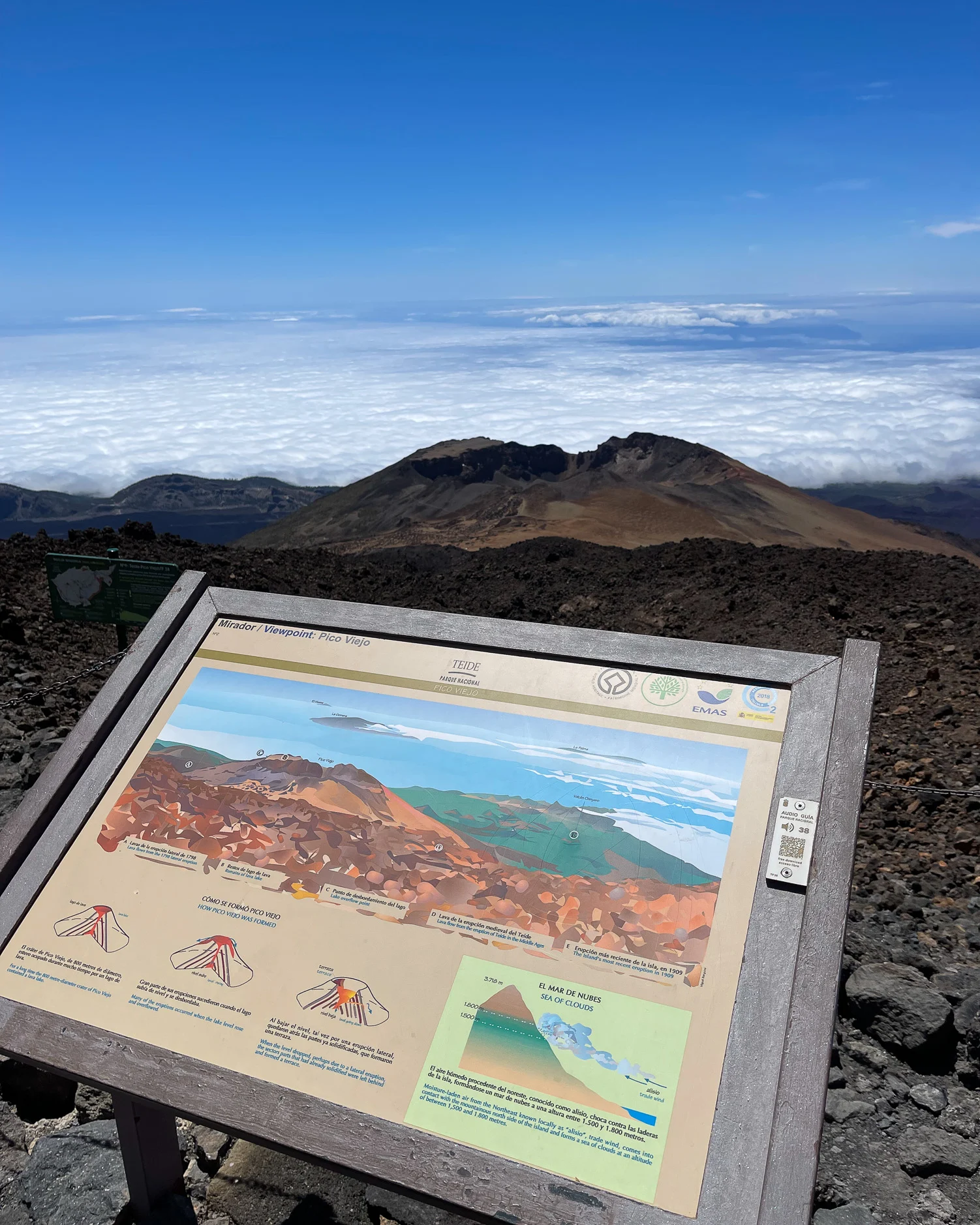
Walk to the Crater of Mount Teide – Route 10 (Telesforo Bravo)
There is a third trail called Telesforo Bravo, which takes you to the very top of the Teide crater (Pico del Teide). You’ll need a special permit to take it, and to preserve the environment only 150 permits are issued for each day. When I last checked, you would need to book 2-3 months in advance. See below how to book the permit for the crater of Mount Teide.
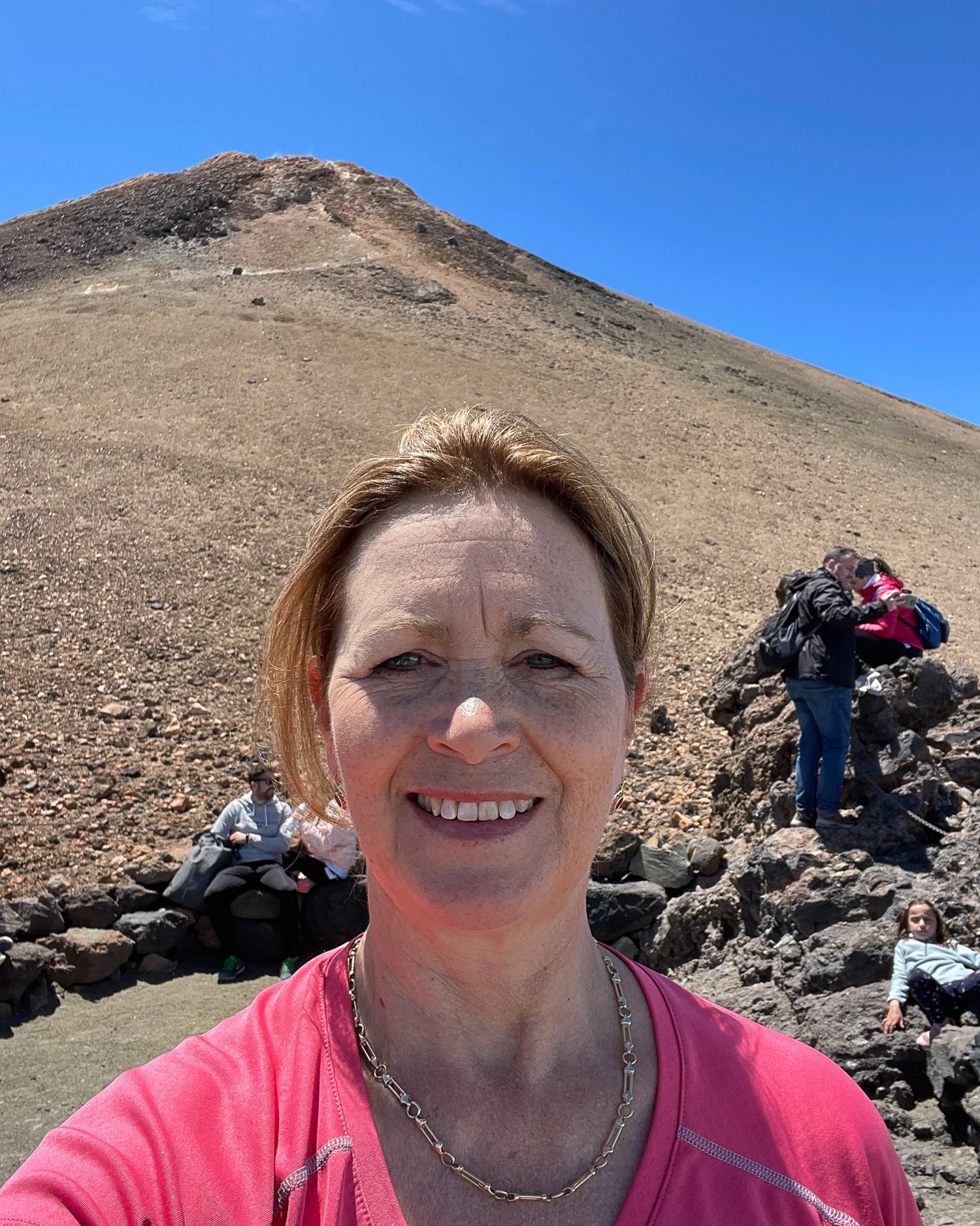
This trail takes you from the top cable car station (La Rambleta) at 3555metres, to the crater of Mount Teide (Pico del Teide) at 3715 metres. The trail is around 650 metres in length, all uphill.
It takes around 45 minutes to reach the crater. From the top, on clear days, you can see across the whole national park and the islands nearby of La Gomera, El Hierro, La Palma and Gran Canaria.
If you have reserved to stay one night in the Refugio de Altavista, you also have permission to climb the Telesforo Bravo trail up to the Mount Teide crater in the early morning. Again, you must descend by 9am.
Teide National Park Cable Car – Facilities
Facilities at the cable car bottom station include
- A car park with space for 220 cars (see below our tips for parking)
- Toilets
- A cafe / waiting room with wifi
- A souvenir shop and information centre
- An interesting exhibition which you can see on your way out when you come down from the top station. If not taking the cable car up you can still ask to see the exhibition.
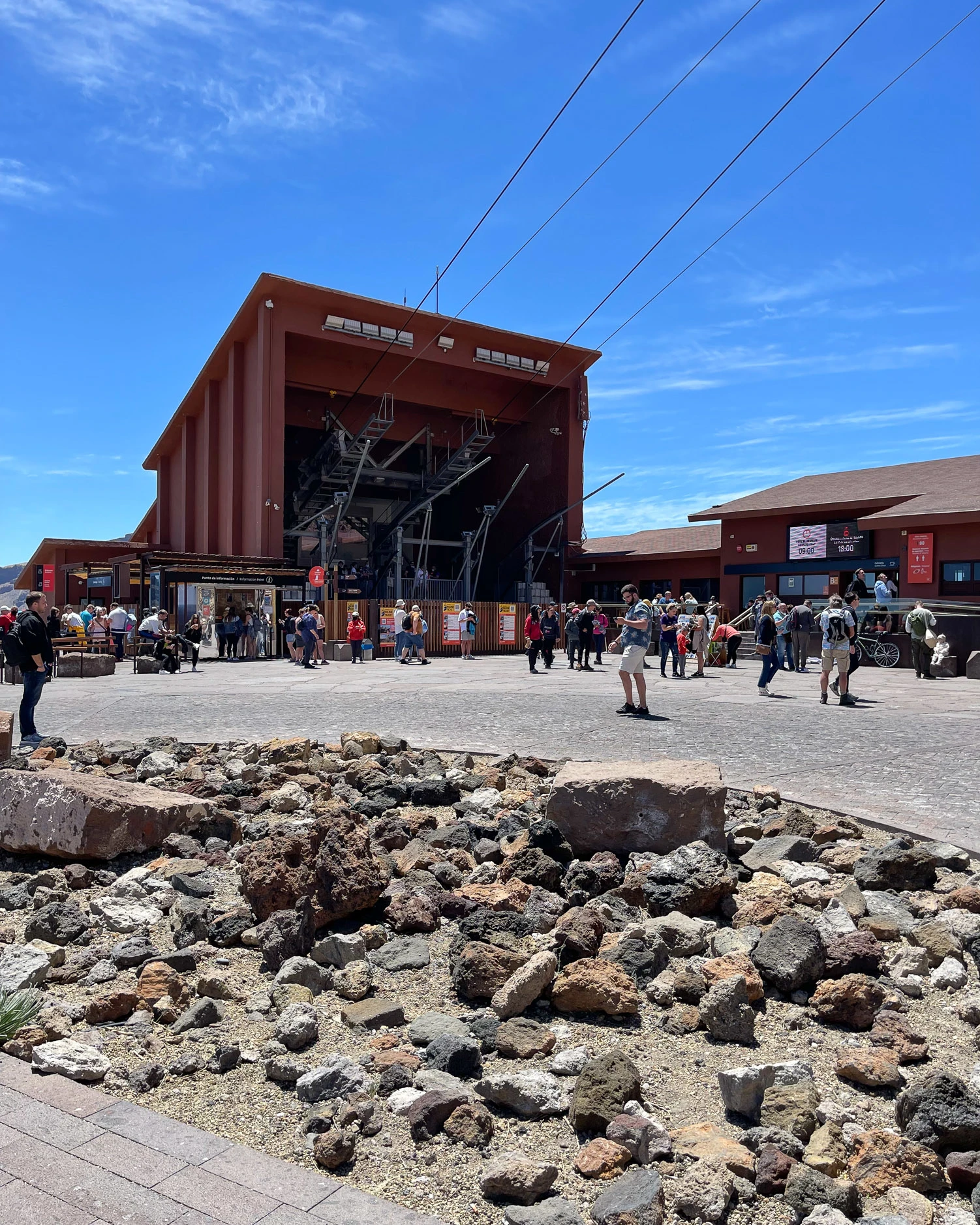
Facilities at the cable car top station include
- Toilets
- An area with vending machines for drinks and snacks
Teide National Park Cable Car – Parking
There is parking space for 220 cars just below the cable car base station. The national park authorities do not want to increase this, as it would encroach on the natural landscape. Instead, they want to encourage visitors to use group transport. At times, the cable car parking can be very busy and appear full. Our tips for parking are:
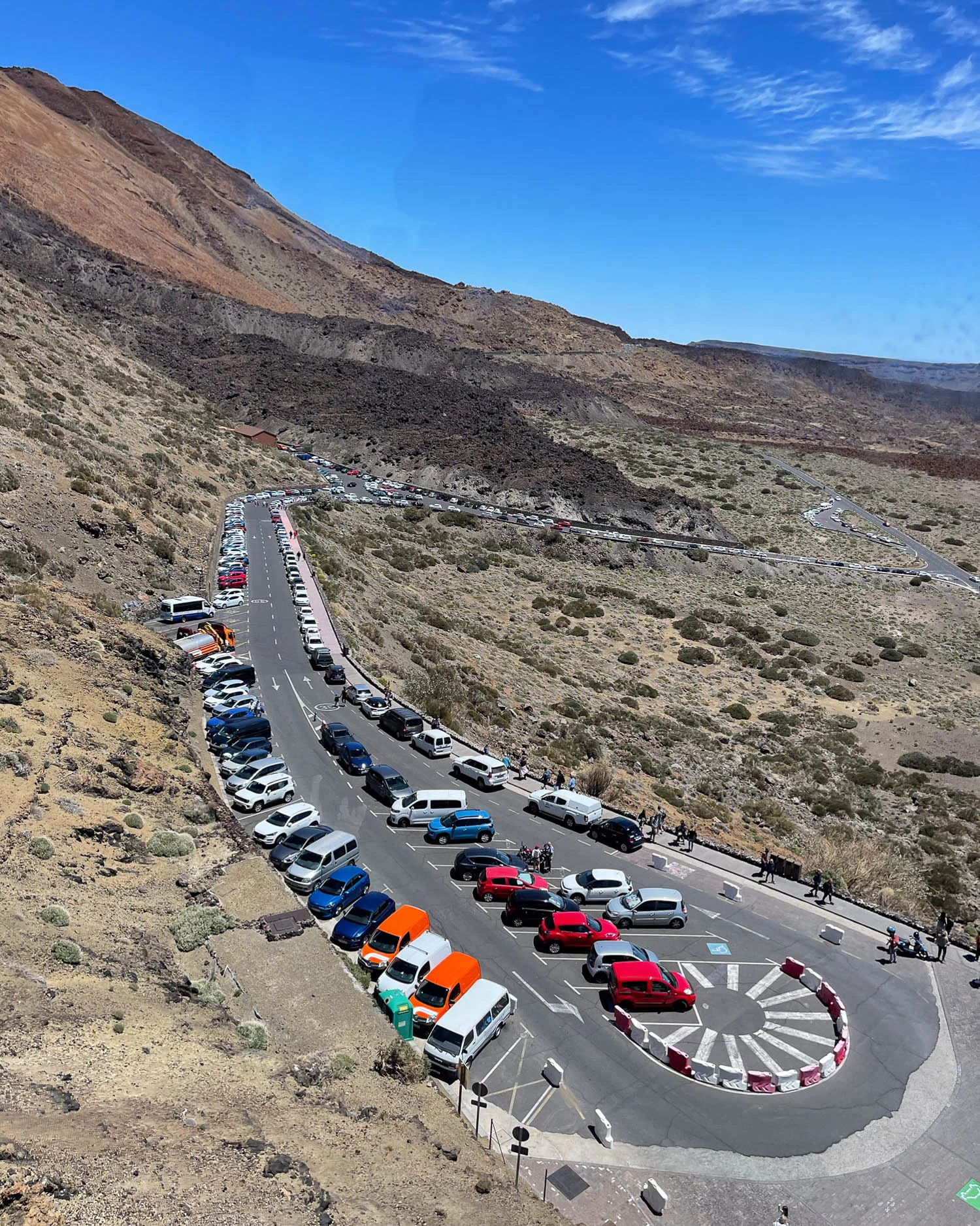
- Allow 20-30 minutes extra to park and walk up to the base station. You also need to arrive at the base station 20 mins before the time given on your ticket. So you may want to arrive at the car park 45-60 minutes before the time on your ticket.
- If there does not appear to be any parking, don’t panic! Drive slowly around the parking area, or drive up the road right to the top and then down again (there is a turning circle at the top). There is a steady turnover of people coming and going, so you will normally find other cars pulling out, releasing a parking space.
- If you see a car getting ready to leave, wait behind to take their space, otherwise someone else will nab it!
- Book cable car tickets earlier in the day, as the parking area and the park in general gets more busy from lunchtime onwards.
- If all else fails, consider parking at some of the smaller car parks on the road nearby. Or, park at the Parador, although this will involve a long walk.
How to book the permit for the crater of Mount Teide (Pico del Teide)
The permit is free and you can book it online on the National Parks website here.
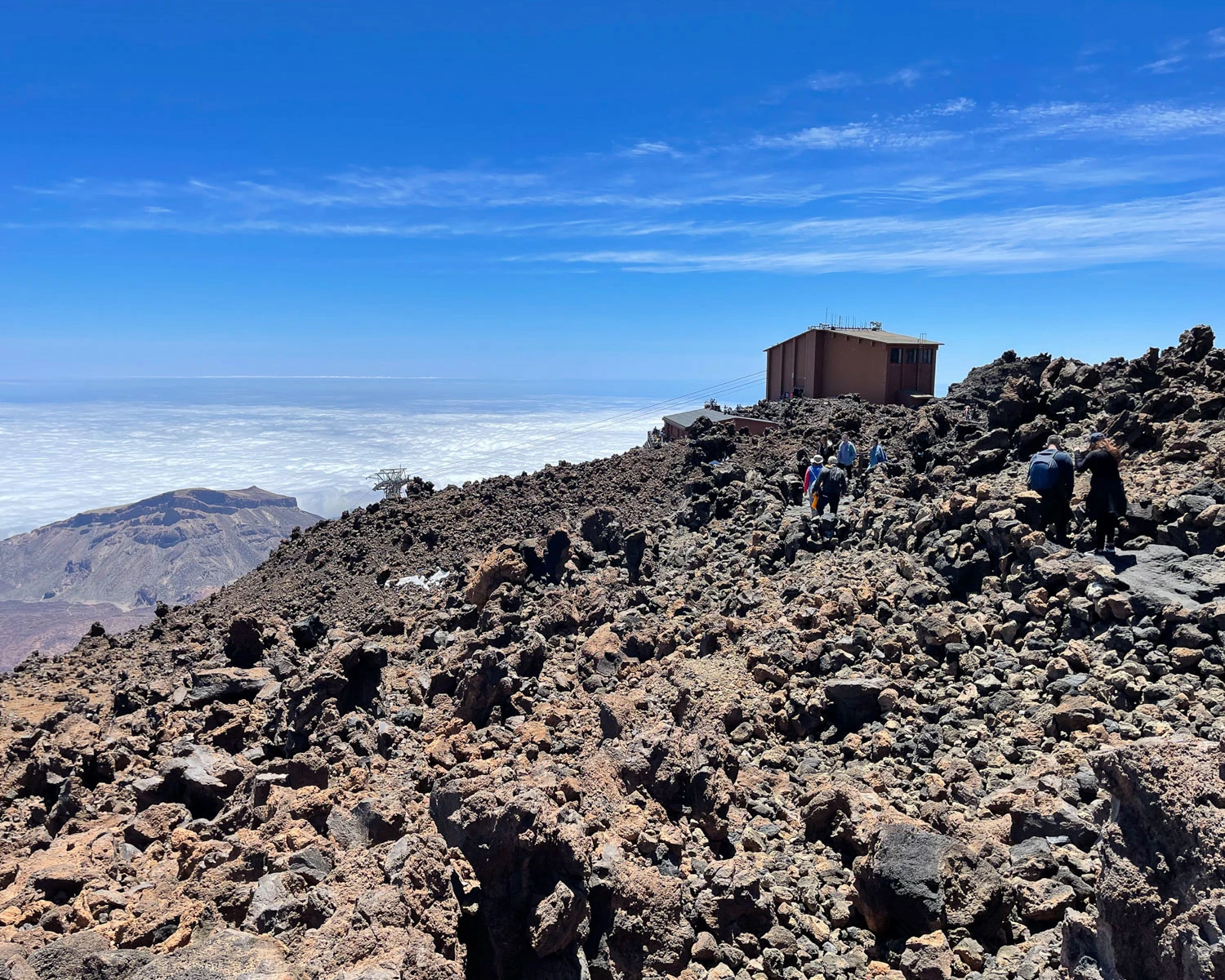
On the Online Reservations Page, choose the option Teide. Then choose Access permit to Pico del Teide. After reading the description, information and conditions, click on the Reservas tab at the top of the page. Choose the option General Public and then Paso Siguente (next page).
On the next page you can select the date you are interested and book for a 2 hour time slot. If spaces are available on the day of your choice, click on the date and choose the number of places. Then click on Select to continue on your preferred time slot. Once the date, number and time slot is selected, click Paso Siguente.
On the next page you will give your contact details. Once you have secured the permit for the Telesforo Bravo path up to the crater, be sure to book your cable car ticket for the appropriate date and time, unless you plan to hike the whole way up Mount Teide.
When arriving at the checkpoint to start the trail, you will need to show not only your permit, put also a passport or other photo ID. The checkpoint to start the trail is at the end of the hut with toilets. It’s a short distance from where you get off the cable car top station, in the direction of the La Fortaleza route. When I last checked, permits were booked up for around 2-3 months in advance.
Book a guided tour
Another way that you can get a permit for the walk to the Mount Teide crater (Telesforo Bravo) is by booking a guided tour that specifically includes this. Tour companies are also able to book a certain number of permits and use these for clients on their tour. If all the free permits are already booked for the day you plan to visit, it’s worth checking this option.
You should also expect these tours to be booked up some time ahead, but perhaps 2-3 weeks rather than 2 months. Book this tour offered directly by the Teleferico de Teide that includes the permit to climb the trail to the crater of Mount Teide. You can also search online for other tour companies that may offer this option.
Tours we recommend
Mount Teide tour with cable car ticket – including pickup from your hotel and tickets for the cable car.
Mount Teide summit guided hiking tour – a full day tour, including a 3 hour guided hike on one of the trails, cable car ticket and the special pass to hike up to the summit of Mount Teide.
Teide National Park full day scenic tour – a full day tour departs from the south of Tenerife, including a drive through Teide National Park with other stops at Icod los Vinos, Garachico and Masca.
Teide National Park Stargazing experience – a night time tour, including dinner at a traditional Canarian restaurant, and stargazing in Teide National Park.
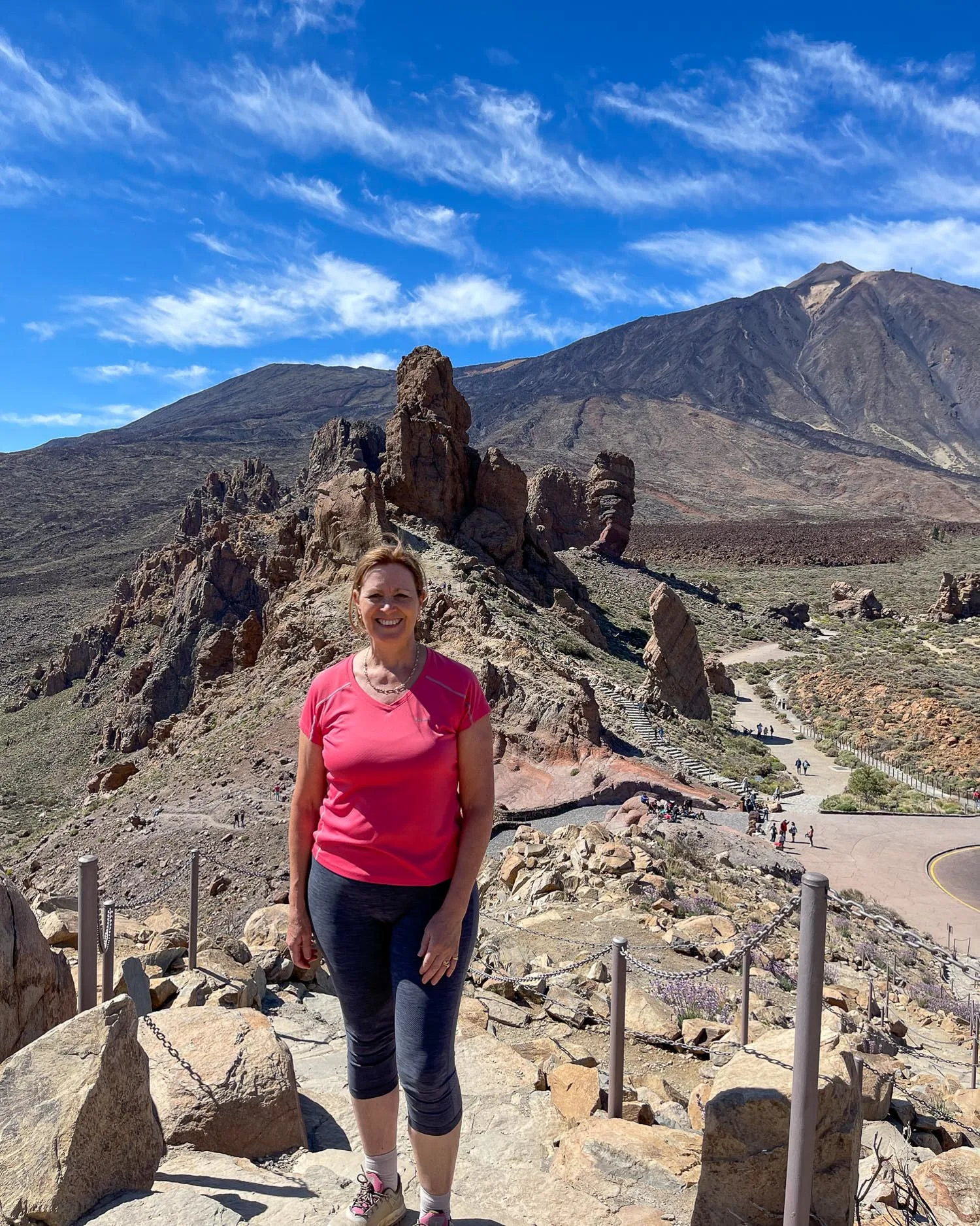
Roques de Garcia – Teide National Park
The Roques de Garcia are a group of striking rock formations within the Teide National Park. They are located 5 minutes walk from the Parador and there is parking along the access road that leads to them.
These rock formations were created when molten lava was forced up through gaps in the rock. It quickly solidified to make columns of rock that eroded over time.
There’s a high point overlooking the main rock formation. This is a fantastic viewpoint (see below) to climb up and get a great photo of the Roques de Garcia with Mount Teide behind them.
If you have time, follow the circular path that leads around the rock formation, away from all the crowds. Return back on the other side past a striking rock known as ‘The Cathedral’.
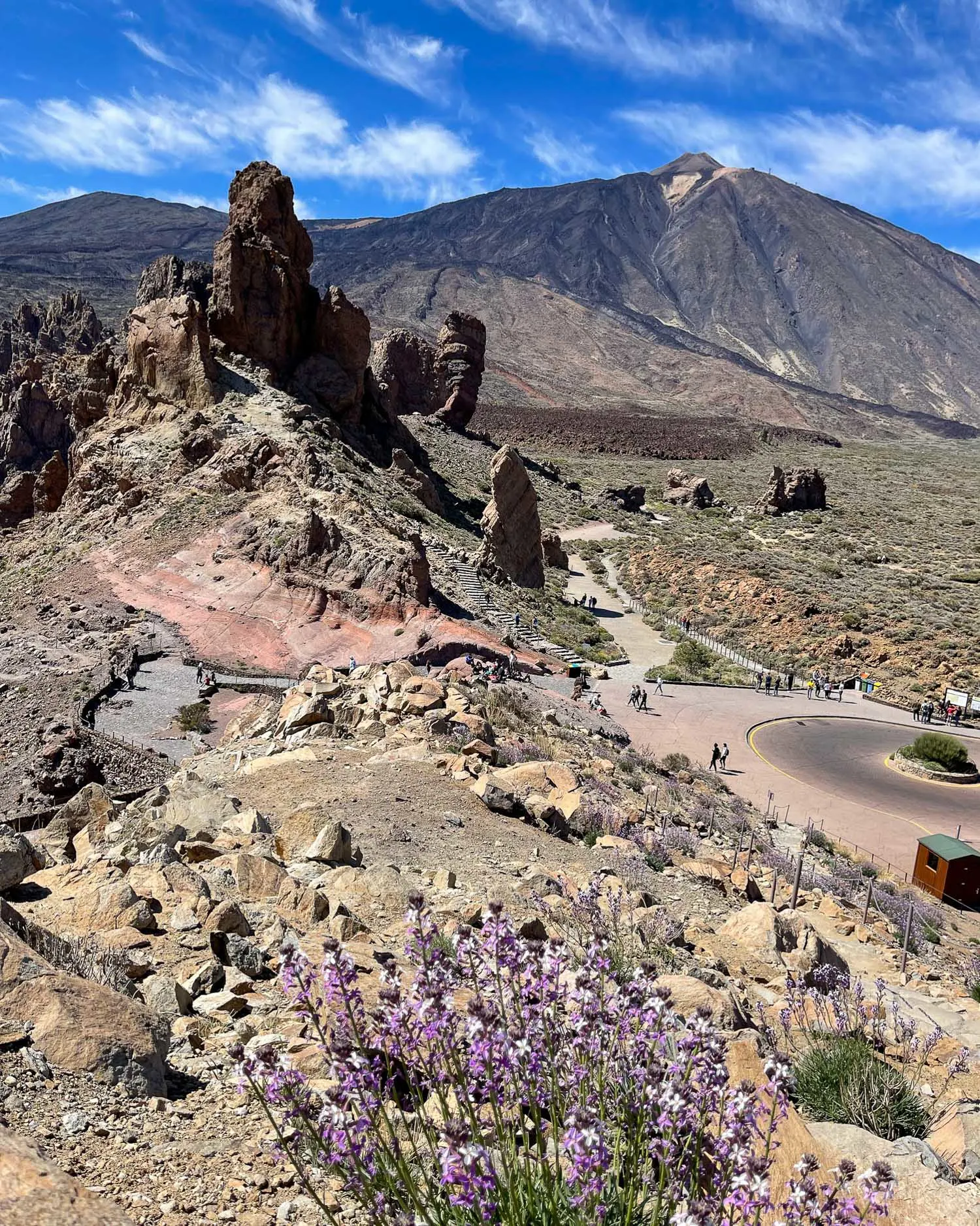
Hiking in Teide National Park
There are plenty of walking trails within Teide National Park. Once you arrive in the national park, you need to pick up a map which shows all the trails from one of the visitor centres, El Portillo or Canada Blanca. Or, find one at the information kiosk at Museo Etnografico Juan Evora.
I was not able to find a good map online, but the trail map from the leaflet is shown earlier in this article. At every stopping place and viewpoint, there are also information boards with maps, showing the trails that lead from that point. The trails are also well marked. Here are some of the more popular hiking trails, but there are many more marked on the map;
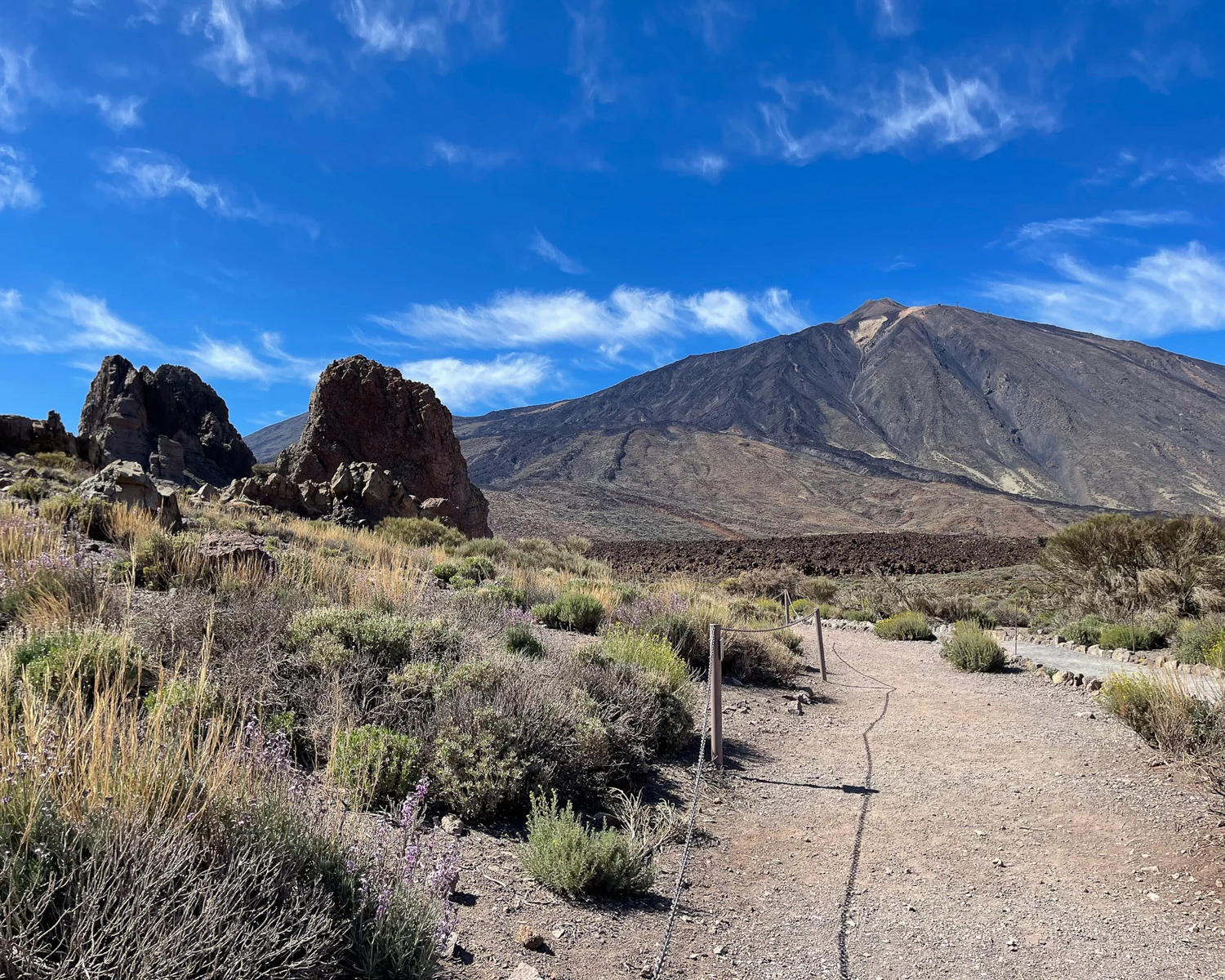
Easy Teide hikes
On Mount Teide leading from the top cable car station there are two short trails of under an hour. Pico Viejo (0.7km) and La Fortaleza (0.4km). If you have a permit you can also walk the trail up to the summit of Mount Teide, called Telesforo Bravo (0.6km).
From the Parador – walk on an easy trail Majua to the cable car (3.8km).
From Roques Garcia – there is a circular trail that takes you around these stunning rock formations (3.6km).
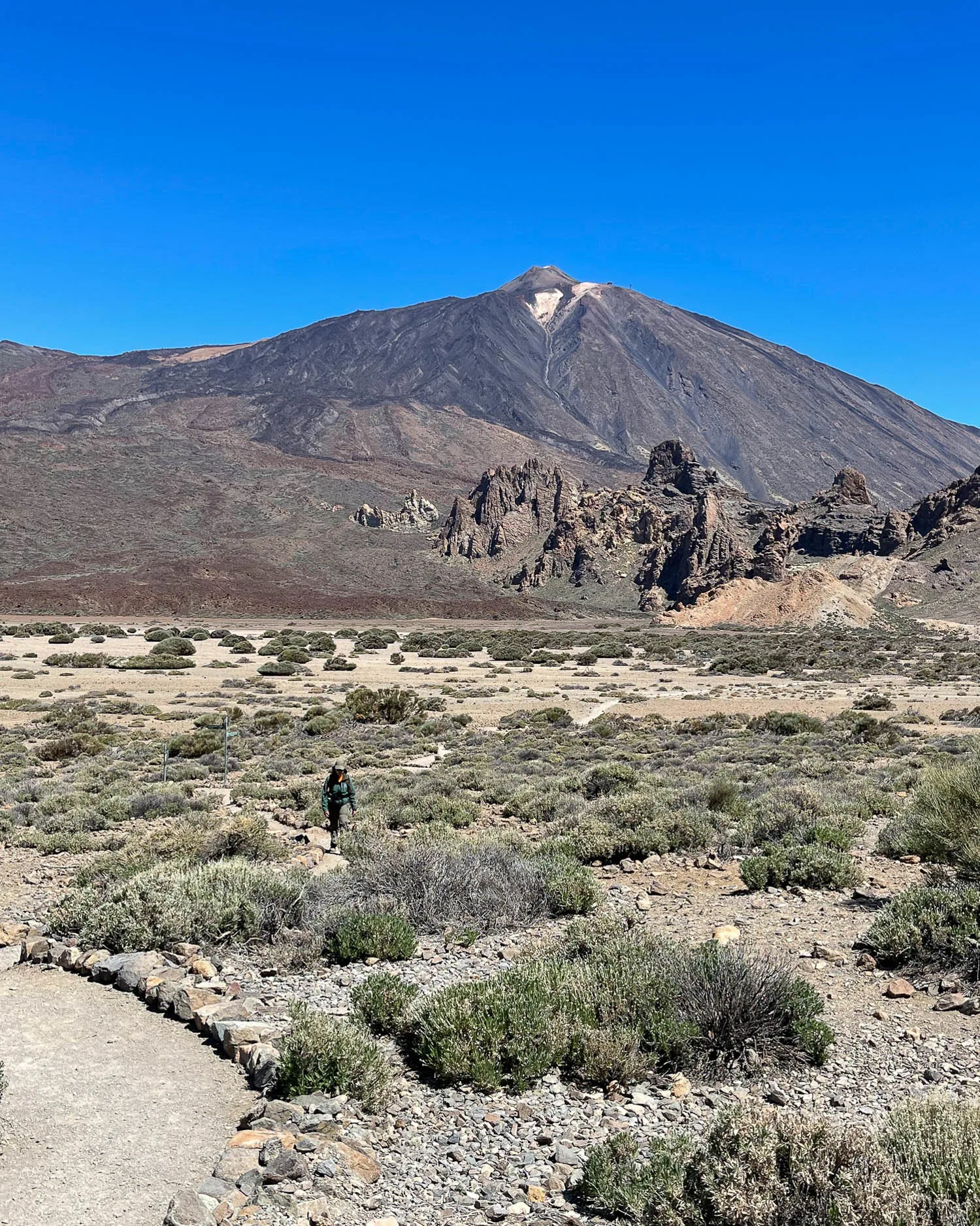
Longer hiking trails
Pico Viejo – From Rocques de Garcia take the circular route in the direction of the Pico Viejo peak. Continue on Los Regatones Negros path which takes you up the Pico Viejo volcanic cone (5.2km).
From the top of the Pico Viejo crater, you can continue up a further path leading to the Pico Viejo viewpoint. This is one of the two trails that lead to the top cable car station. You can then use the cable car to descend if you wish.
Montana Blanca – From the road close to the cable car lower station, the Montana Blanca trail ascends Mount Teide. On the upper slopes, you’ll pass the Refuge Altavista, before arriving at the La Fortaleza viewpoint (9.5km). From here you can take the La Fortaleza path back to the upper cable car station, and use the cable car to descend if you wish.

Stay at Parador de Las Cañadas del Teide in Tenerife – the only hotel within Teide National Park
Parador de las Cañadas del Teide
The Parador de las Cañadas del Teide is the only hotel within the Teide National Park itself. However, there are plenty of accommodation options in the towns and resorts that surround the park. Paradors are a Spanish institution where old or historic buildings have been been converted into state owned hotels.
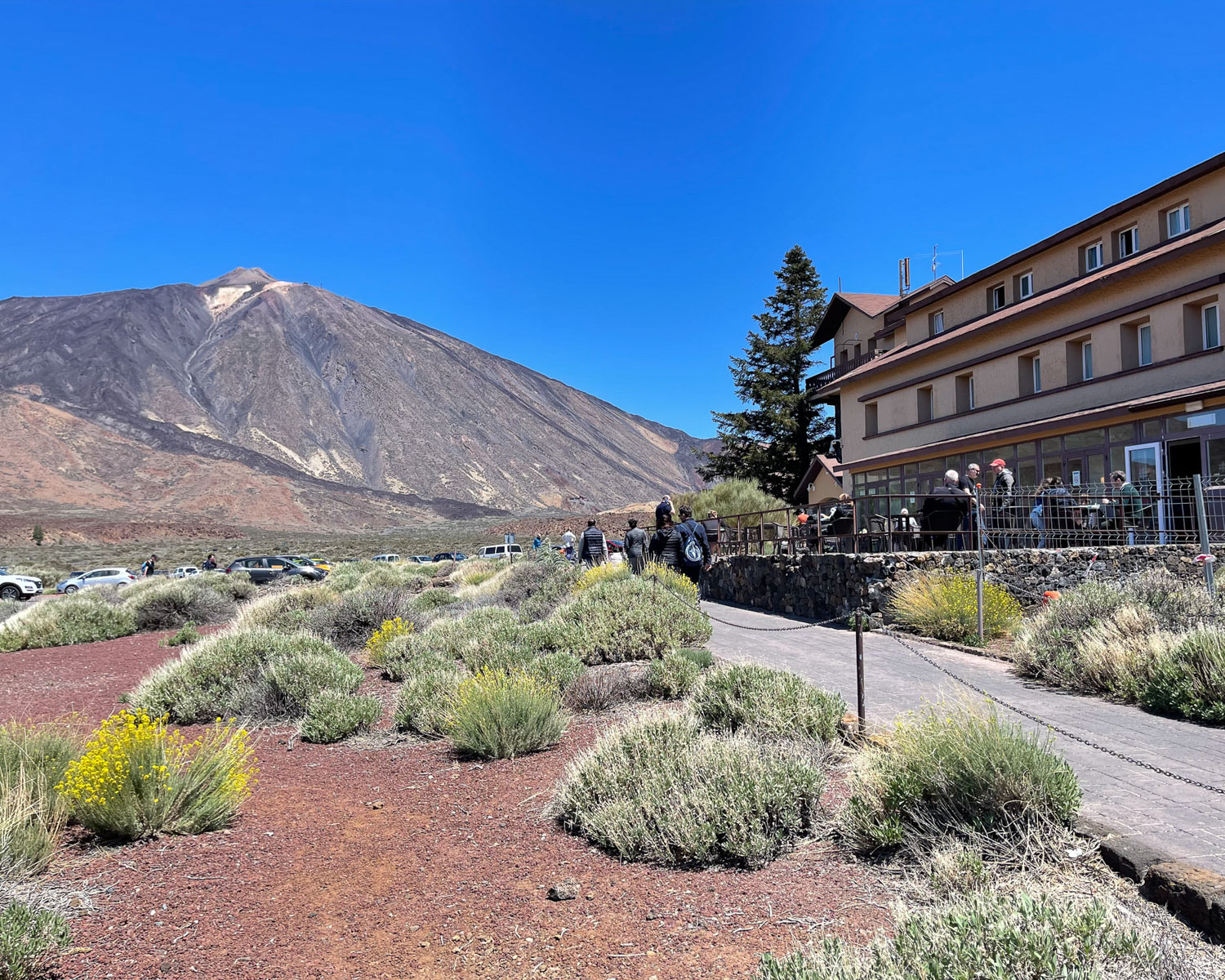
The Parador in Teide is a modern, comfortable mountain lodge hotel, with amazing views of Mount Teide. Its restaurant serves traditional Canarian dishes. There are 37 rooms and suites, and surprisingly an indoor swimming pool.
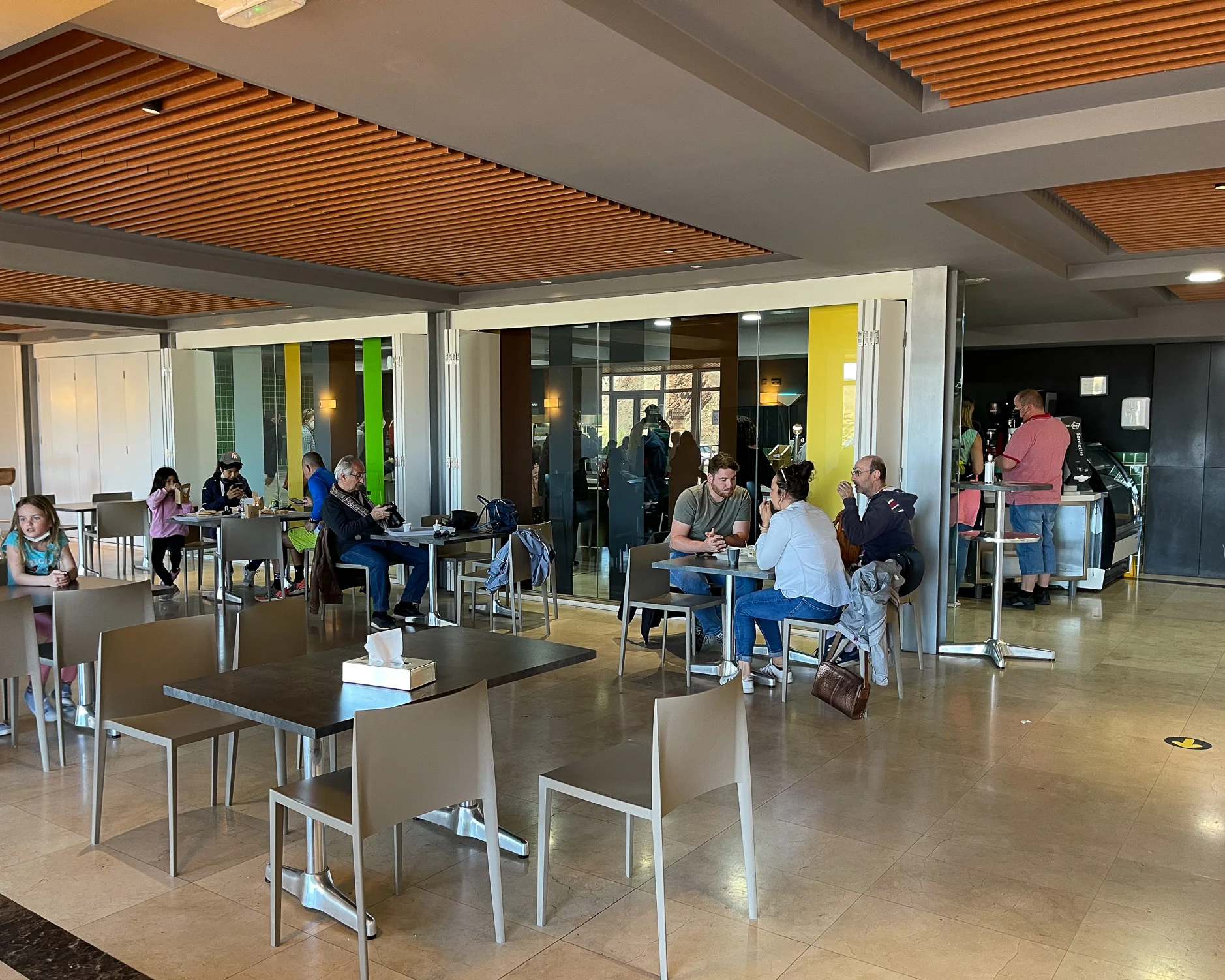
Most visitors coming for the day will stop by the Parador to check out the information centre and gift shop. Visitors will often dine at the cafeteria adjoining the hotel, where I had lunch.
At the self service counter there was a selection of sandwiches, salads, hot lunchtime dishes and other snacks which I thought were fairly priced. The decor is rather utilitarian but the outside terrace has a wonderful view of Mount Teide. There is a WC here which you have to pay to use if not eating in the cafe.
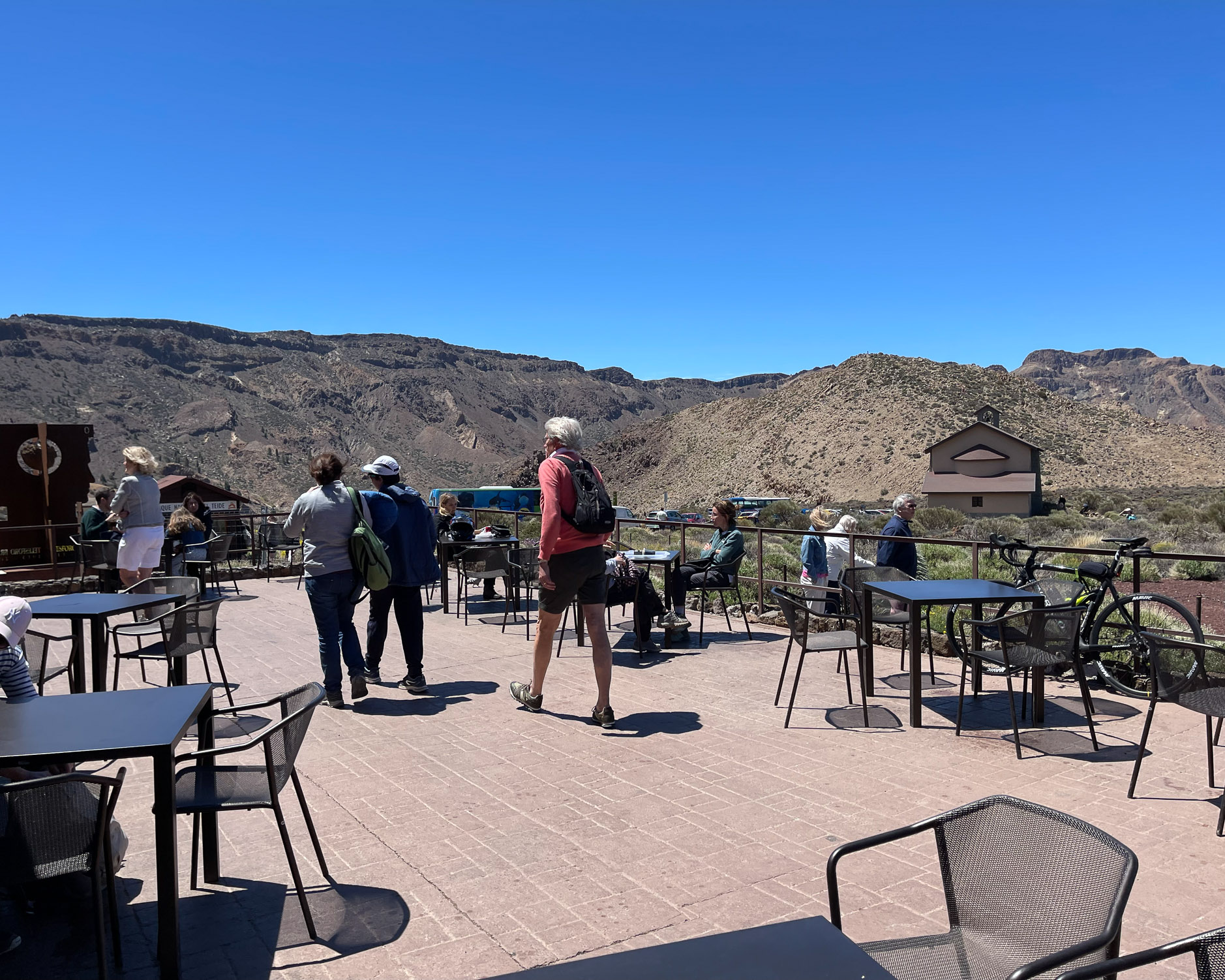

There’s a large public car parking area at the Parador and a second parking area just across the main road for the Roques de Garcia. The parking can be quite busy, so I’d grab whatever parking space you can find. Then walk between the Parador and the Roques de Garcia to see them both.

Stay at Parador de Las Cañadas del Teide in Tenerife – the only hotel within Teide National Park
Teide Observatory
The clear skies and high altitude of Teide National Park, make it an ideal location for stargazing. Located on the northern edge of the park at Izana, the Teide observatory is made up of several buildings.
It is the largest solar observatory in the world. Within the different buildings spread over 50 hectares are solar telescopes that are owned by 19 different countries. All of these contribute to research on the solar system.
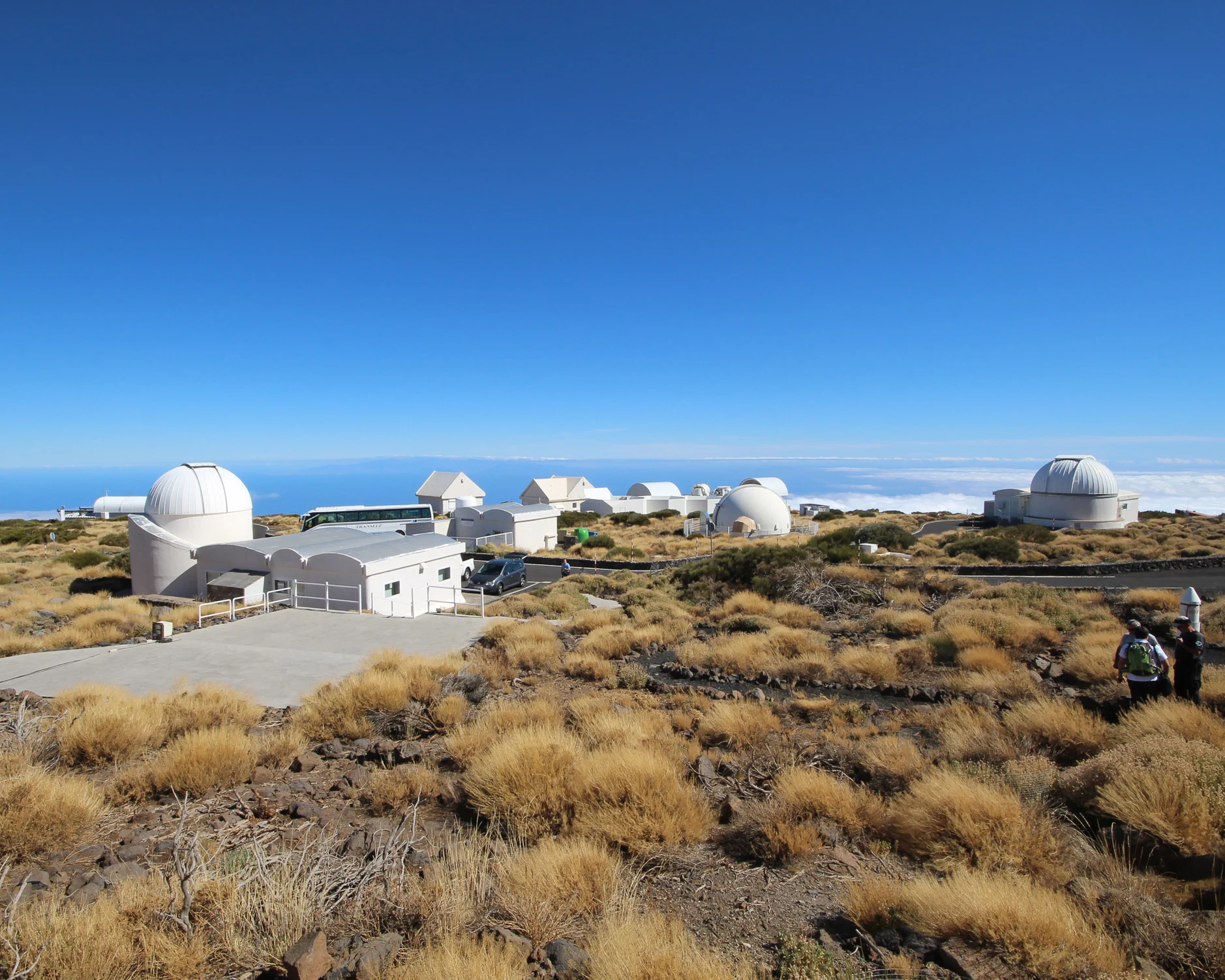
While you can park near the different buildings, the inside of the observatory buildings and telescopes can only be visited on a tour. You can pre book a tour here. There are several different tours available, from a 1.5 hour daytime visit, to a full day tour that also includes night-time stargazing.
Guided visits enable you to see the nocturnal, microwave and solar telescopes within the observatory. You can view the sun through two telescopes with different filters.
Within the science dome, you can hear a talk on the electromagnetic spectrum. View a time lapse video of the night time activity observed from the Teide observatory.
It’s also possible to do a night-time star-gazing tour in other parts of Teide National Park. Many star-gazing tours start either at the Parador or at the Cable Car station.
Stargazing in Teide National Park
We took a Mount Teide stargazing tour, to enjoy the Teide National Park at night. The altitude and clear skies make this one of the best places in Europe for stargazing. Unless you are already knowledgeable in astronomy, you’ll probably need a guide to make the most of the experience.
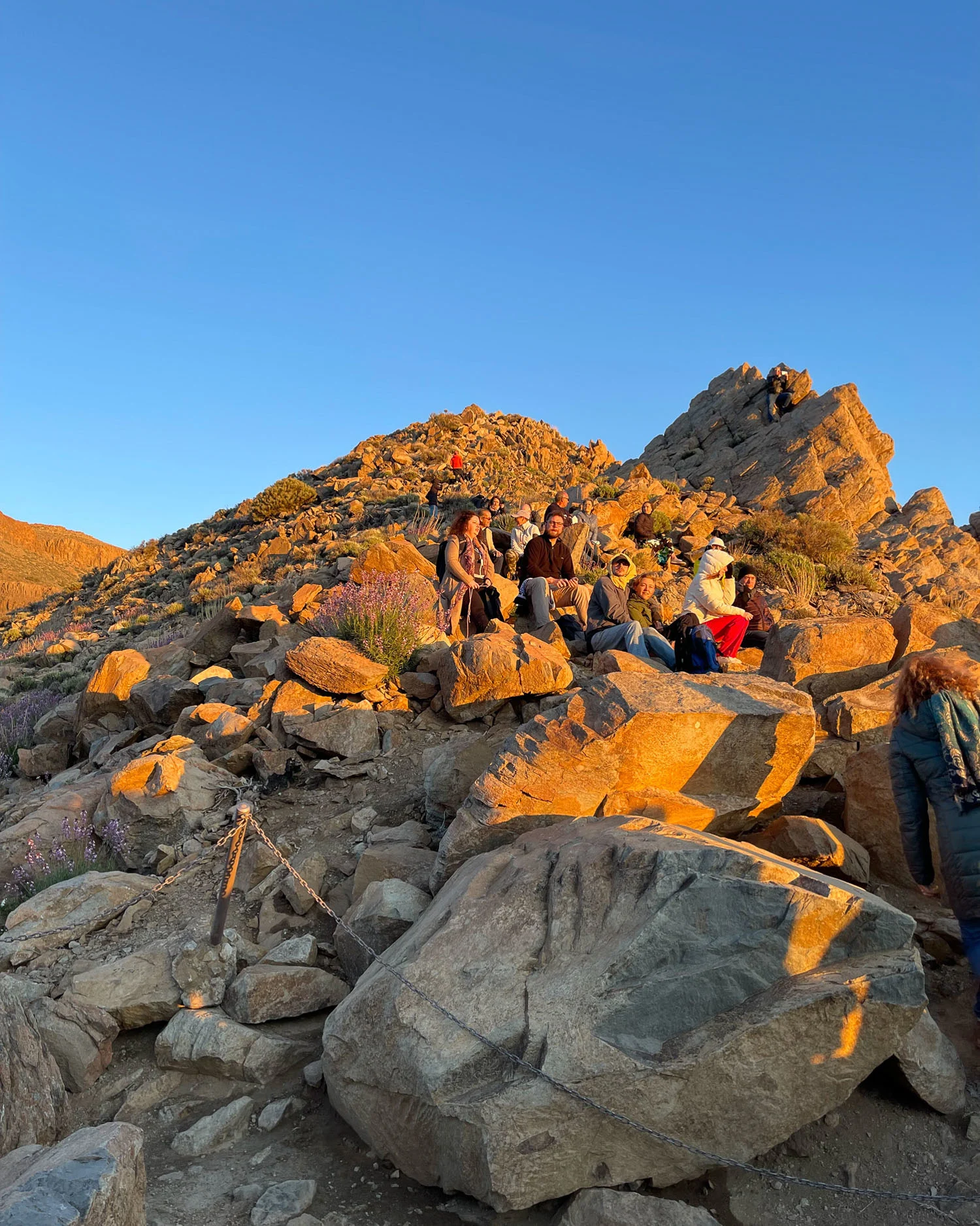
We started our stargazing tour with a meal at the Parador, with views of Mount Teide and Mount Guajara glowing red at sunset. Then we walked out to the area close to Roques de Garcia. Our guide pointed out the different star formations and let us have a look at them through the telescope.
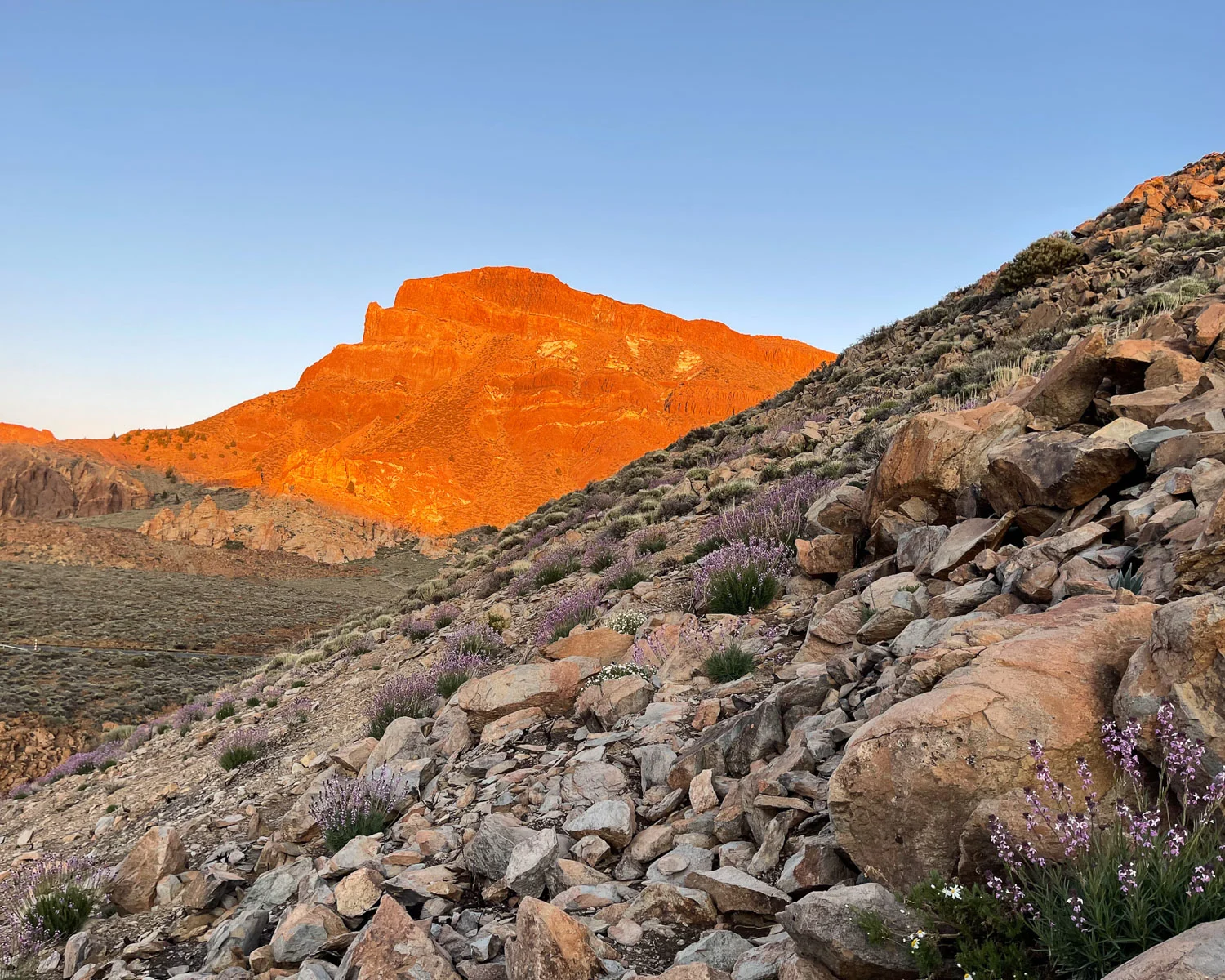
There are other tour options that start at the cable car and let you see the stars from Mount Teide itself. Check out this Teide National Park Stargazing experience. This night time tour includes dinner at a traditional Canarian restaurant, and stargazing in Teide National Park.
Tip: It gets very cold in Teide National Park at night. Be sure to dress warmly with a fleece, warm jacket and warm trainers or boots – possibly also a hat and gloves.
Transport to Teide National park
It takes around an hour’s drive on winding roads, from most coastal resorts and towns, to reach the plateau of the Teide National Park. Here are some different transport options for getting to Teide National park.
Hire a car
You can rent a car to drive to the national park and around the different areas of the national park. This option will give you maximum flexibility to stop at all the places you want and stay for as long as you want. I did this and I was happy I could see so much in one day.
The road to the park and within the park is well maintained and easy to drive. However, driving up to the park involves quite a lot of hairpin bends as you climb in altitude. Once in the park there are numerous small and large car parks where you can stop at different viewpoints.
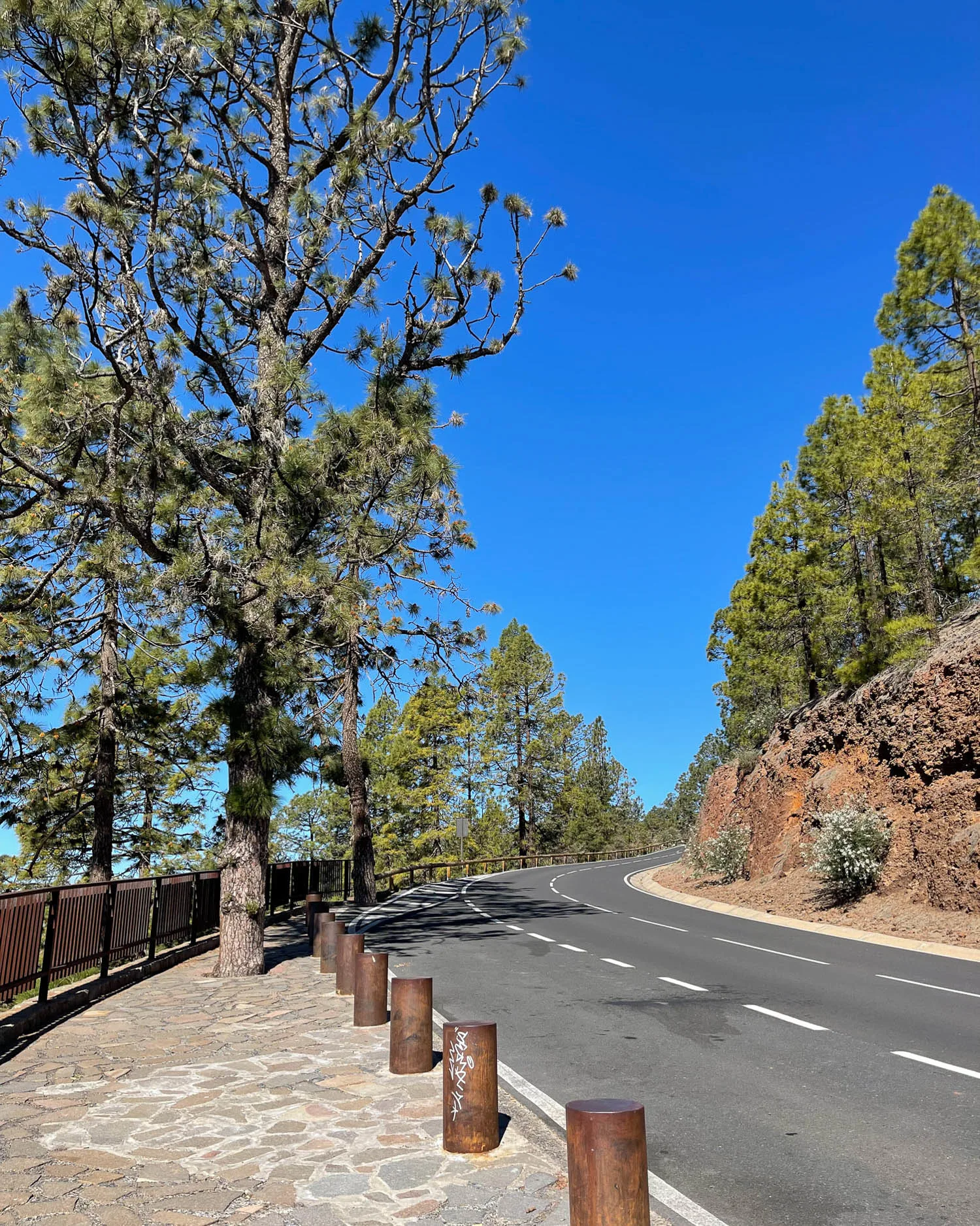
Take a tour
This is an excellent option if you don’t want the stress of driving yourself. Most tours will pick you up from a designated point, at or near your hotel, so long as you are staying in a major resort or town. There are many different types of tours, some that give you more or less time within the park.
Check carefully how long you’ll spend in the park and what’s included in each tour before booking. The downside of group tours, is that you have to stick to the prearranged stops that are part of the tour. However, there are options to book a private tour and agree what you’d like to see with your guide or driver.
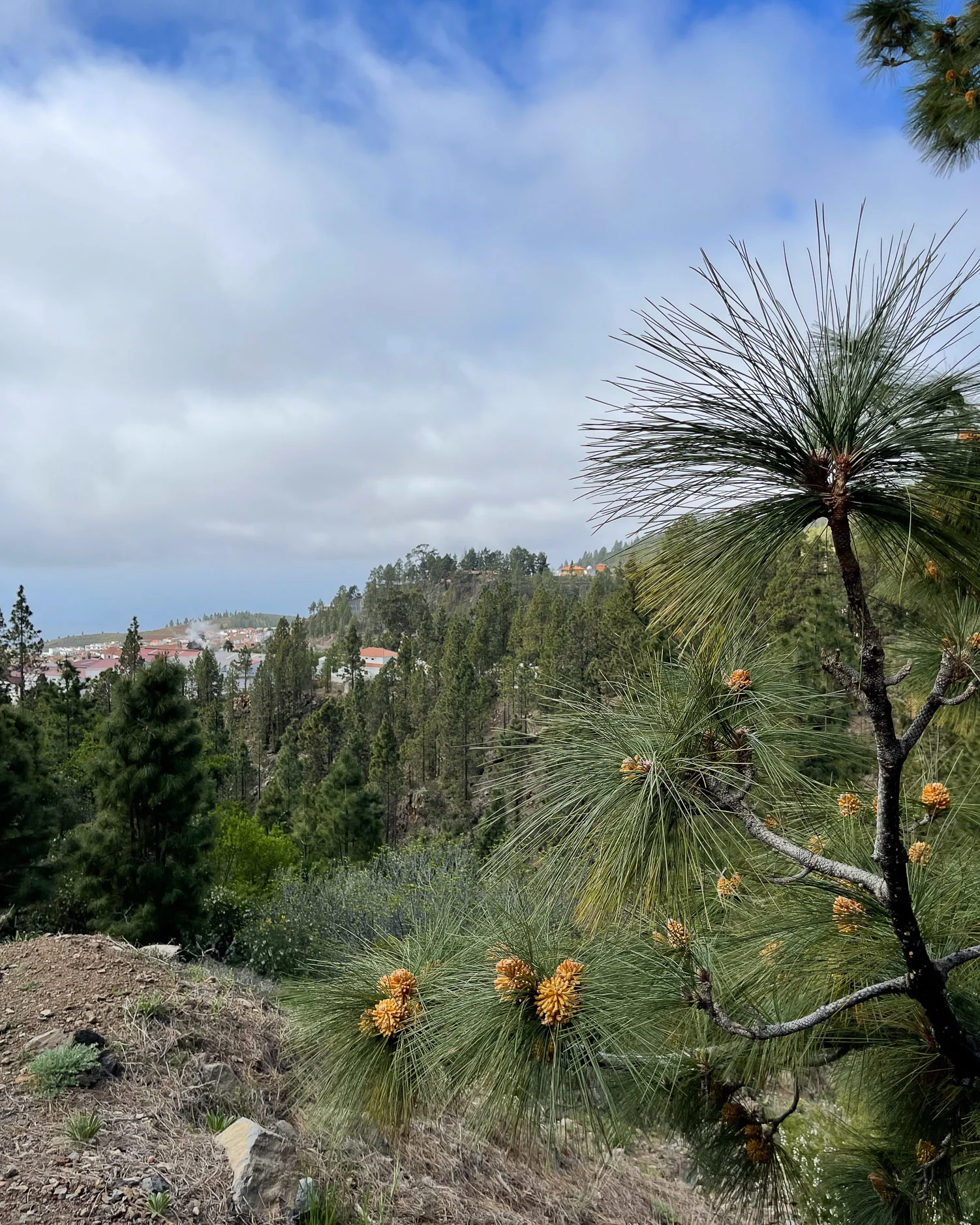
Take the public bus
Buses, known in Tenerife as Guagas run daily. We advise checking timetables carefully as they can be subject to change. You can consult the timetables on the public bus company Titsa website. The two lines that run to Teide National Park are numbers 342 and 348.
Line 342 runs from Costa Adeje on the south coast, while line 348 runs from Puerto de la Cruz on the north coast. Both buses run once per day, leaving in the morning and stopping at various places in the park before returning in the afternoon. Line 341 makes trips between different points within in the park around 5 times during the day.
The bus is a good budget option but not very flexible. It can drop you at various points within the park, but distances between different points of interest are quite large. Once in the park, buses to get around are limited. This option is good if you mainly want to spend your time walking on the different trails within the park, and can work with the limited number of buses available.
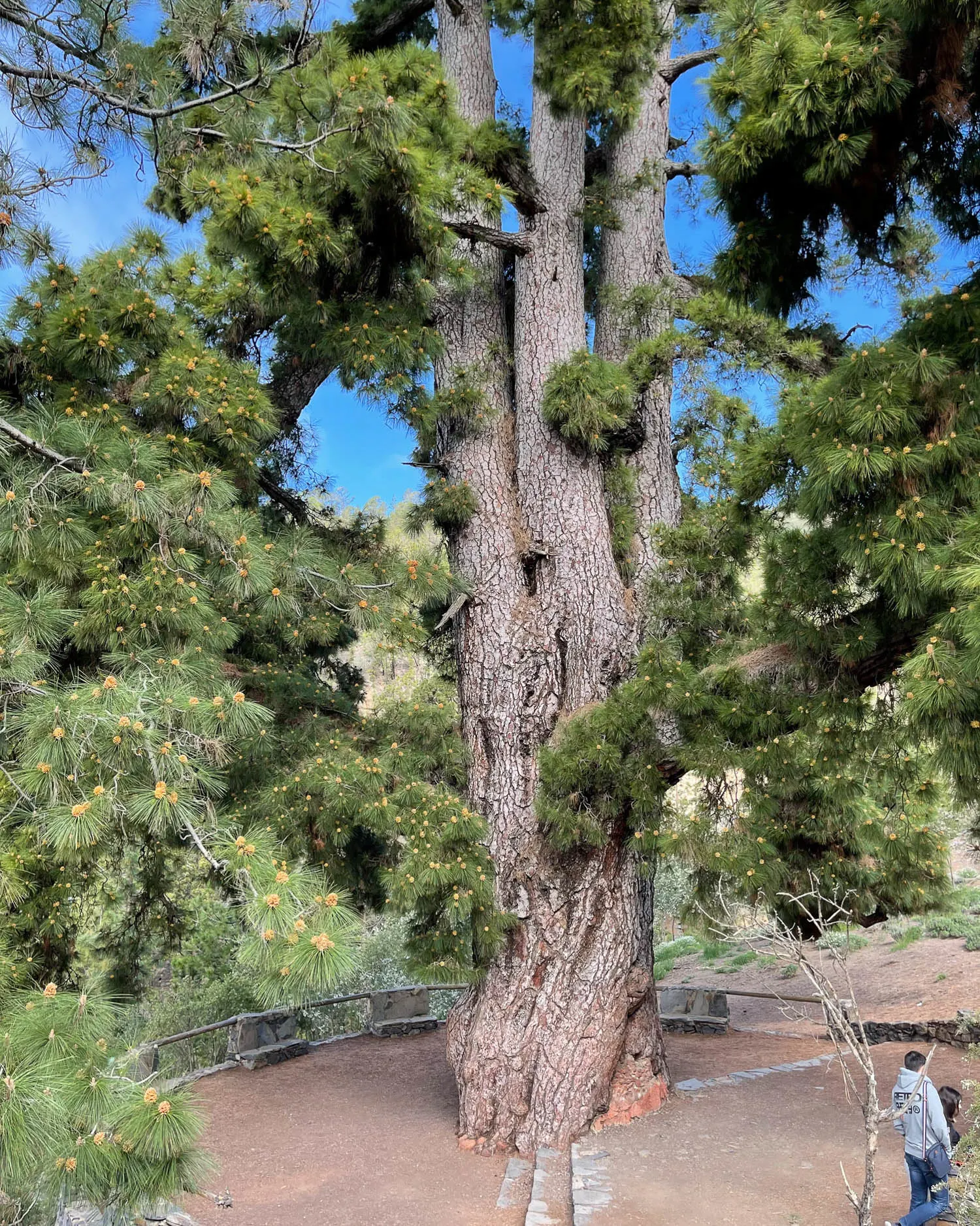
Tours we recommend
Mount Teide tour with cable car ticket – including pickup from your hotel and tickets for the cable car.
Teide National Park full day scenic tour – a full day tour departs from the south of Tenerife, including a drive through Teide National Park with other stops at Icod los Vinos, Garachico and Masca.
Teide National Park Stargazing experience – a night time tour, including dinner at a traditional Canarian restaurant, and stargazing in Teide National Park.
Mount Teide summit guided hiking tour – a full day tour, including a 3 hour guided hike on one of the trails, cable car ticket and the special pass to hike up to the summit of Mount Teide.
How to get to Teide National Park
If you are wondering how to get to Teide National Park, there are 3 main routes, depending on where you are staying on Tenerife.
From the South
If coming from the south of Tenerife (Costa Adeje, Playa de las Americas, El Medano) you can take the TF- 51 which joins up with the TF – 21 through Vilaflor. This is the route that I took.
From the North-west
If coming from the north-west corner of Tenerife (Garachico, Santiago del Teide, Los Gigantes) you can take the TF-38 route into the park.
From the North
If coming from the north of Tenerife (Puerto de la Cruz, La Orotava, Santa Cruz de Tenerife) take the TF- 21 route into the park.
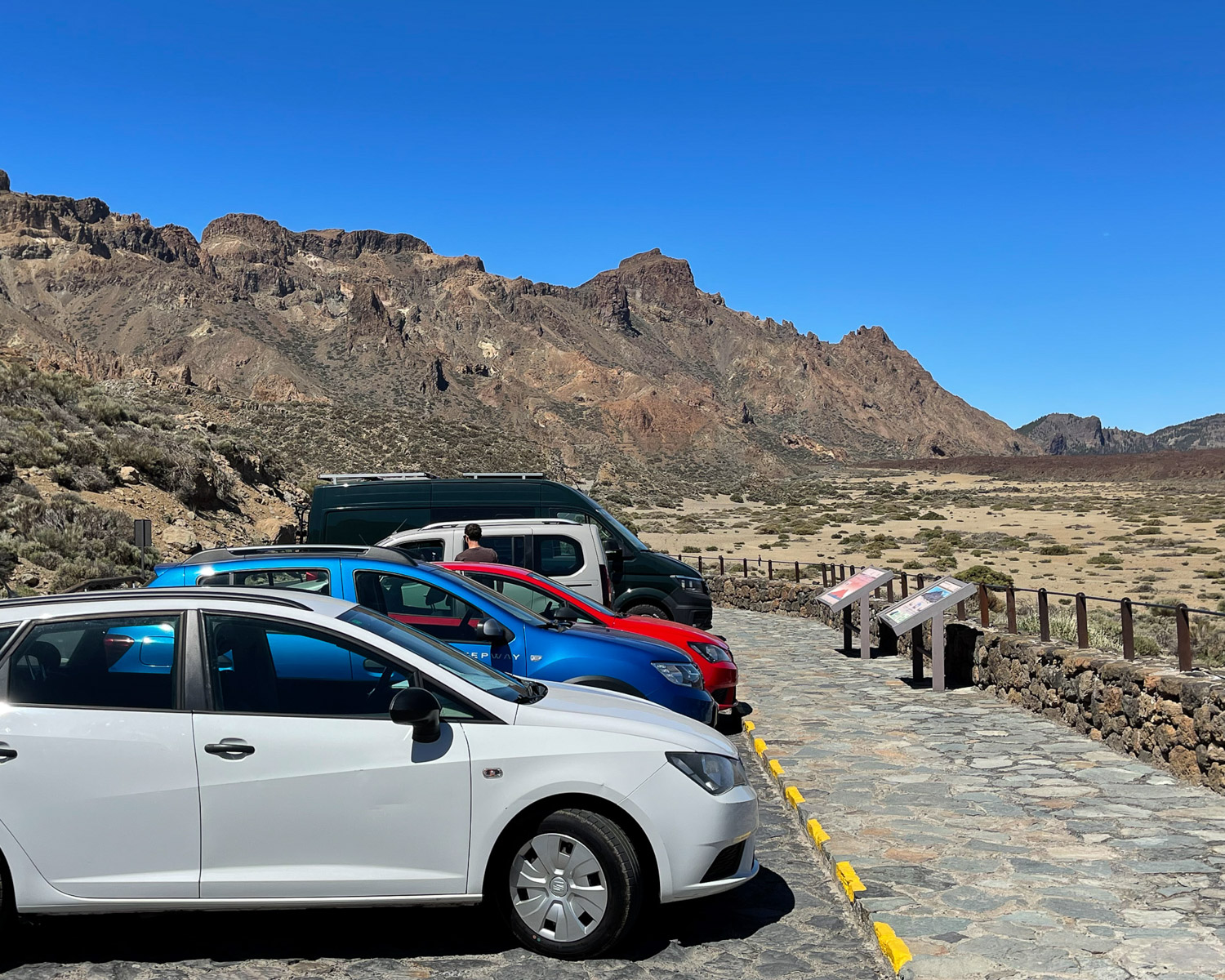
Driving tips
- The roads that take you into Teide National Park can be very winding, so allow more time than your mapping app tells you. Take care on the road, especially if you drive through cloud cover or any bad weather.
- On all three routes up to the park, there are interesting viewpoints and places you may want to stop, so again allow extra time for this.
- Keep to the main road, following the prominent road signs for Teide National Park, rather than taking the side roads that Google maps may suggest. Sometimes mapping apps will try to take you on a side road that looks like a short cut. But, these are often single lane roads used by locals, so best to stick to the main routes.
Teide National Park weather
Tenerife offers a mild and sunny climate year round and is a winter sun destination for visitors escaping the cold in other parts of Europe. Temperatures range from highs of 20 degrees C in January – February to highs of 28 degrees C in July – August.
Because of its higher altitude of around 2,400 metres, the Teide National Park weather tends to be quite a few degrees cooler than the rest of Tenerife. During the winter months, temperatures may drop to an average of 8 degrees C. In summer it’s more common to have warm, sunny days, with temperatures around 20-22 degrees C.
Discover why Lanzarote is a top winter sun destination in Europe

Bear in mind, however, that if you take the cable car, you will be ascending to around 3500 metres. Temperatures can drop even further, sometimes to near freezing in winter. If there is a snowfall or high winds, it’s likely that the cable car will close.
While you do need to be prepared for cold temperatures, Teide can also be surprisingly sunny. The altitude often places you above the cloud layer. Sometimes you will drive through a layer of cloud as you ascend from the coast and emerge to find blue skies and brilliant sunshine, which makes the air feel a lot warmer. For this reason, you need to protect your face and skin with suncream, since the sun can be strong despite lower air temperatures.
If you want to check the weather on Teide for today or the week ahead, there is always good information on the Teide Volcano website. It includes information on what is open or closed within the park
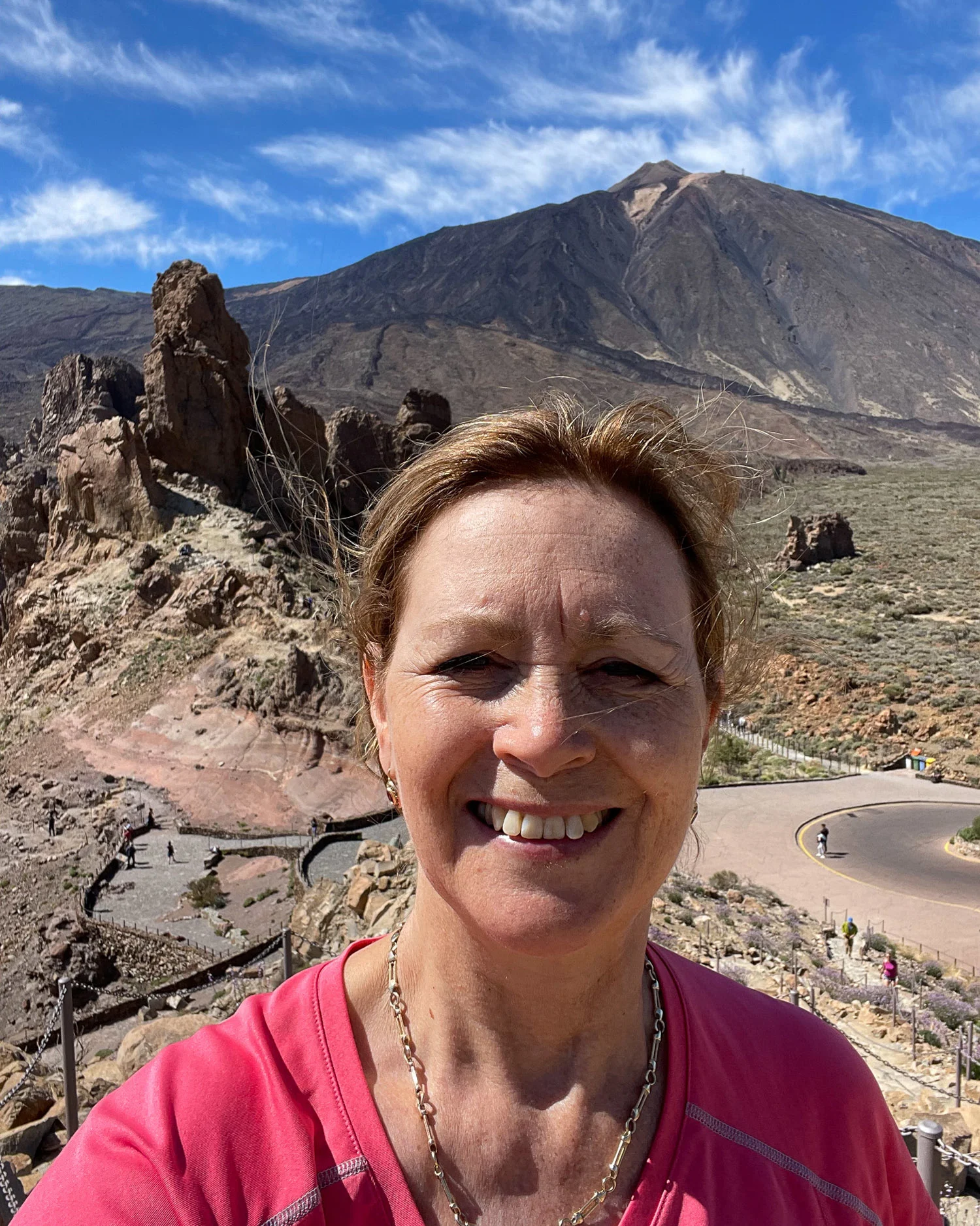
What to wear for Teide National Park
Because of the range in temperature within Teide National Park, it’s good to come prepared with layers of clothing. Don’t assume that just because you were in shorts and t-shirt at your coastal resort, this will be suitable for visiting the national park.
When I visited in April, I wore quick dry sports leggings and a sports t-shirt, with a jumper and light jacket that I put on when necessary. During the day, while hiking in the sunshine, a short sleeved t-shirt was fine. But, as soon as I stopped any activity, I needed a jumper as well.
On ascending the cable car to the hikes at the top of Mount Teide, I definitely needed a jumper and sometimes a jacket. If you are planning to do any star gazing, I recommend packing even more layers, as the night time temperatures can be around freezing.
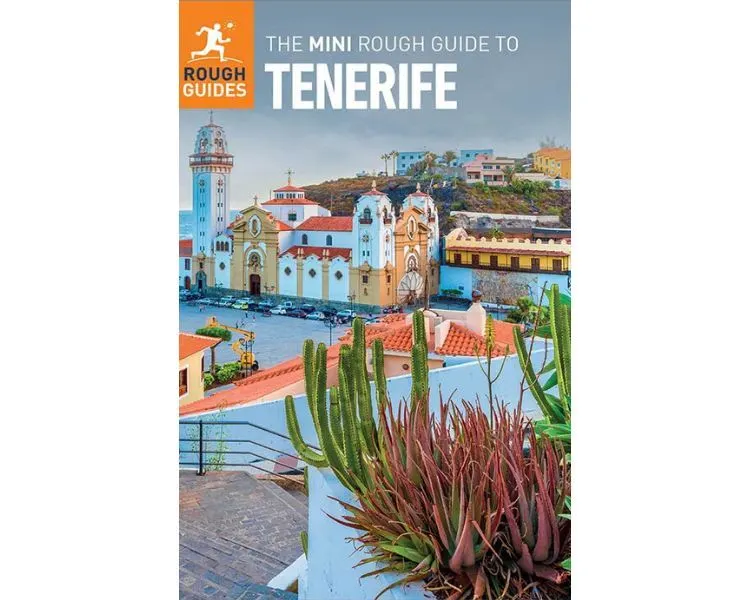
Need a guidebook for Tenerife? We recommend the Mini Rough Guide to Tenerife
Packing list for Teide National Park
If you plan to be fairly active within the park, I’d recommend that you wear or pack;
- Short sleeve t-shirt
- Second long sleeve layer or light fleece
- Lightweight jacket in summer, a warmer padded jacket in winter, especially if you plan to ascend the cable car.
- Long, quick drying leggings or trousers. If you like to wear shorts, then you might consider hiking trousers with legs that unzip or pack some leggings to go over shorts in case you feel cold.
- When visiting at night time for stargazing be sure to be wear warm clothes and jacket.
- If ascending the cable car in winter, or for any night time stargazing, also pack a hat and gloves.
- Closed toe trainers or hiking shoes that have a good grip are ideal, as the terrain is rocky and sharp, with light gravel that could get into open toe sandals.
- A day sack, so that you can pack away surplus clothing, together with sunscreen, a water bottle and some snacks or picnic.

Need help to design your dream holiday? We’ve partnered with UK travel advisor Luxeco Holidays to create your personalised itinerary
Plan your trip
For more information to plan your holiday in Tenerife, visit the Tenerife tourism website and Canary Islands tourism website.
The Volcano Teide website is the official website for the cable car in the park and has plenty of information about visiting the park, However, much of the emphasis is on booking tours and experiences.
If you need a guidebook for Tenerife, we recommend the Mini Rough Guide to Tenerife

Stay at Parador de Las Cañadas del Teide in Tenerife – the only hotel within Teide National Park
Pin it
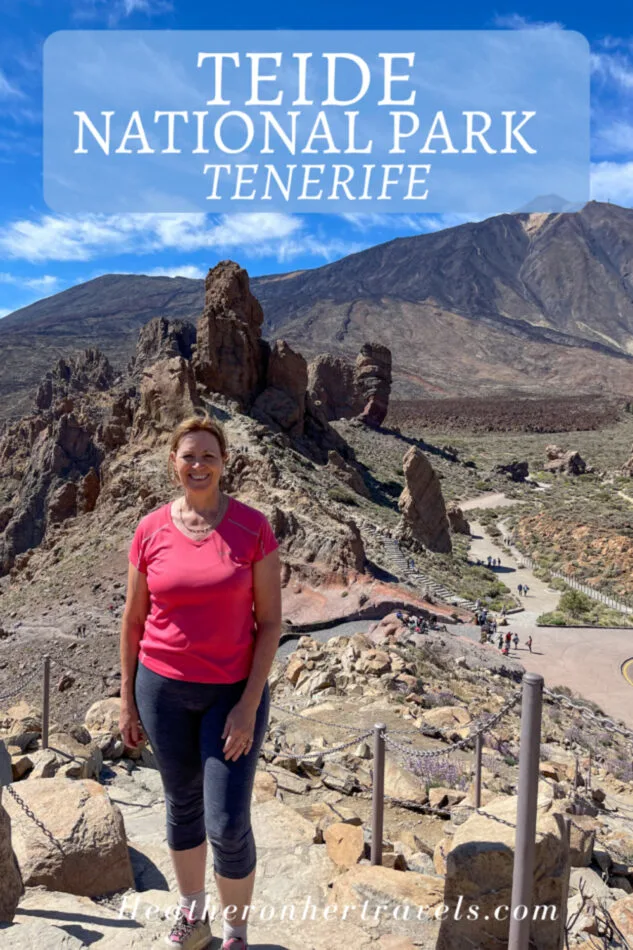
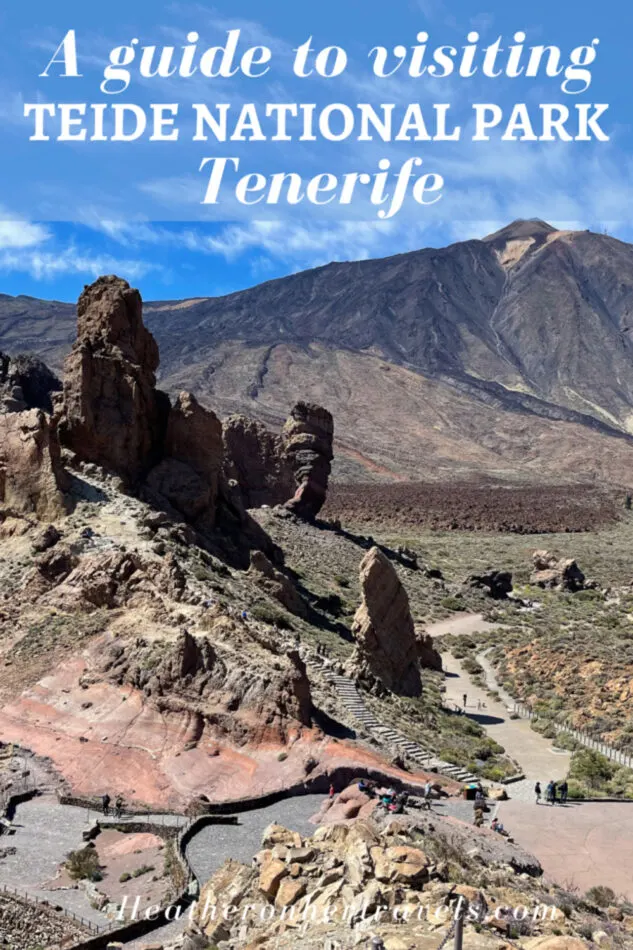
Read Next
Read about 12 Fun and unexpected things to do in Tenerife
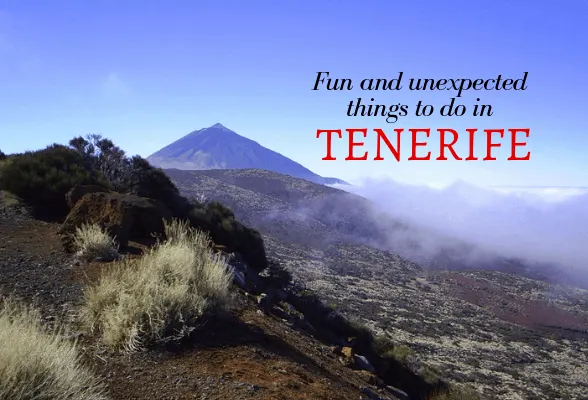
Some of the experiences mentioned were on a press trip hosted* by Tenerife Tourism and British Guild of Travel Writers
* More info on my policies page
This article is originally published at Heatheronhertravels.com


